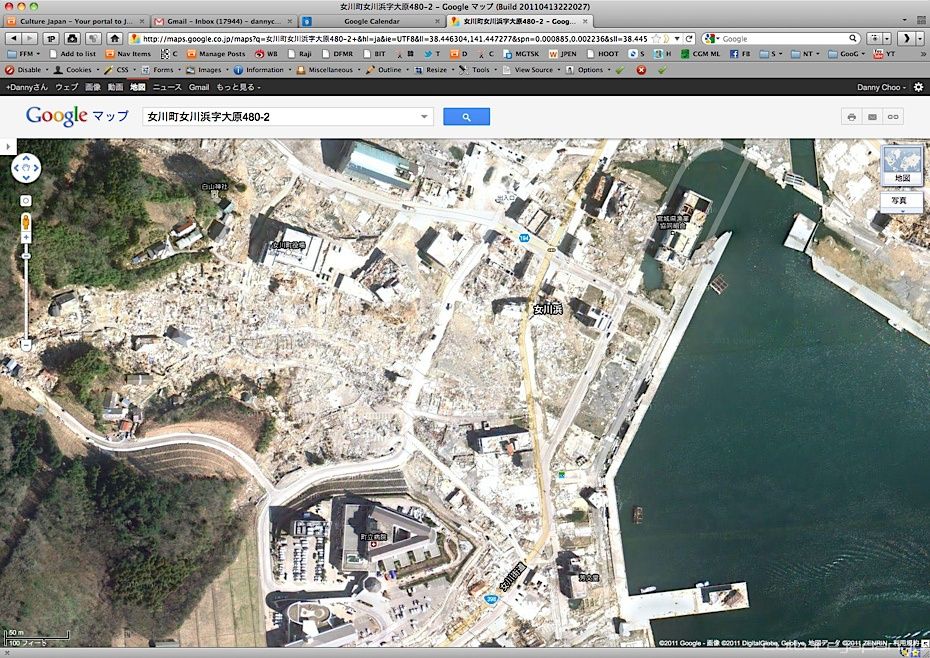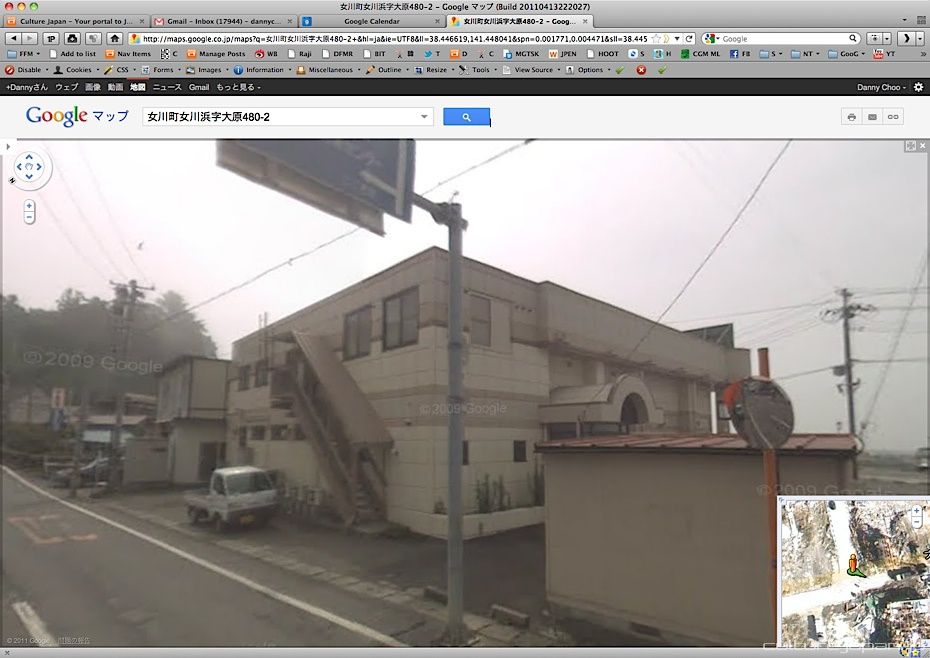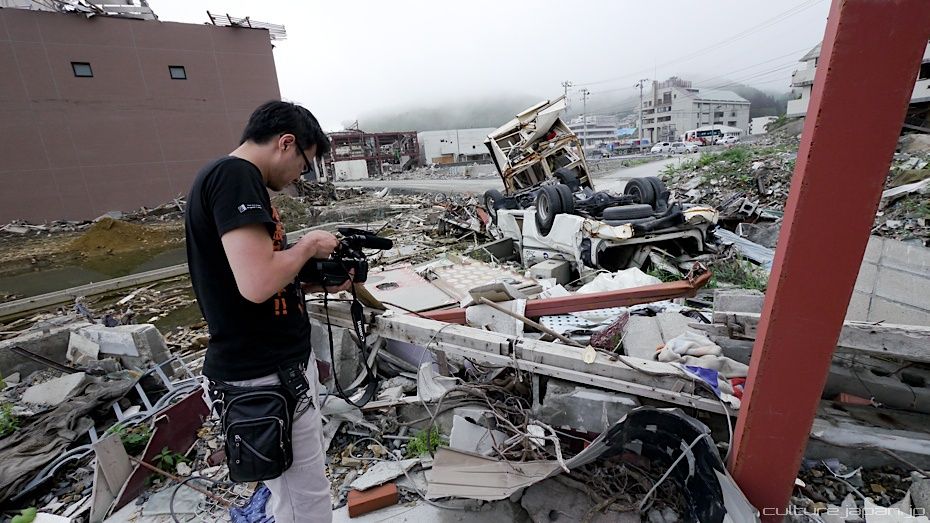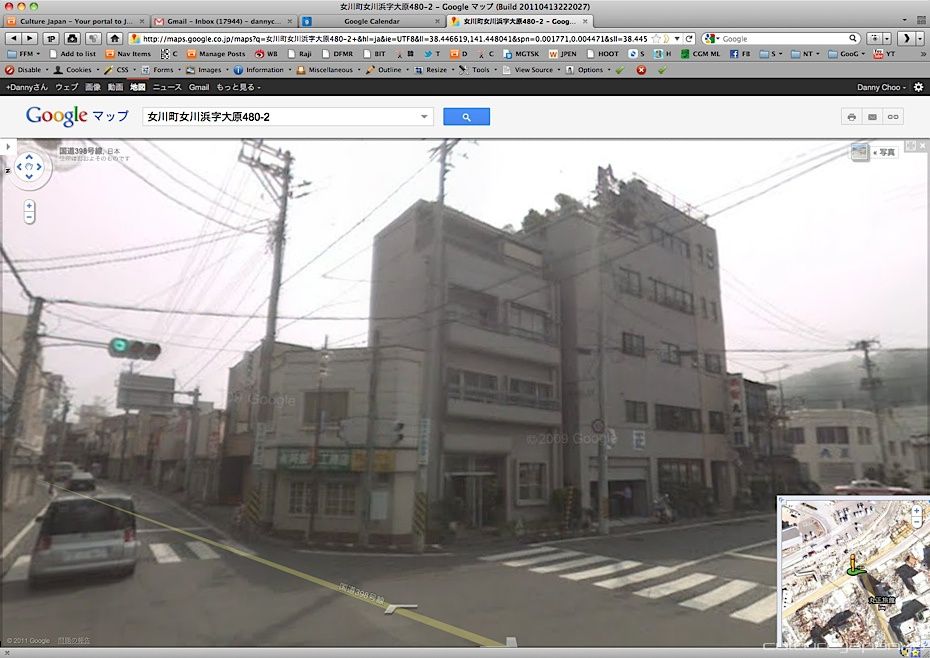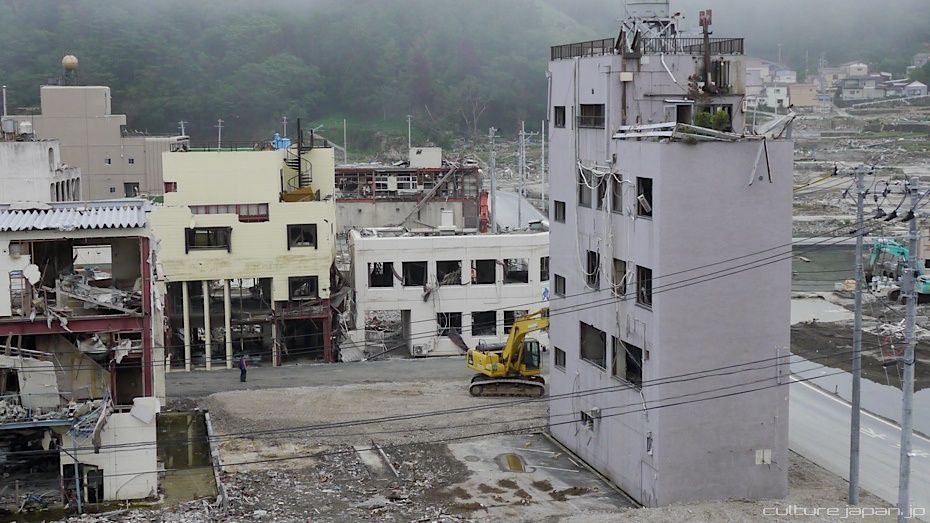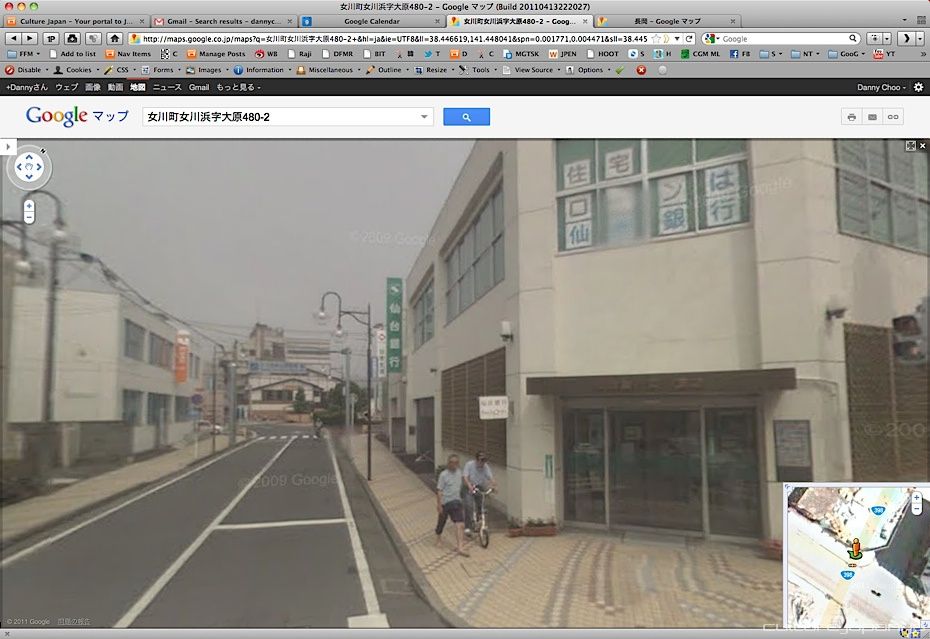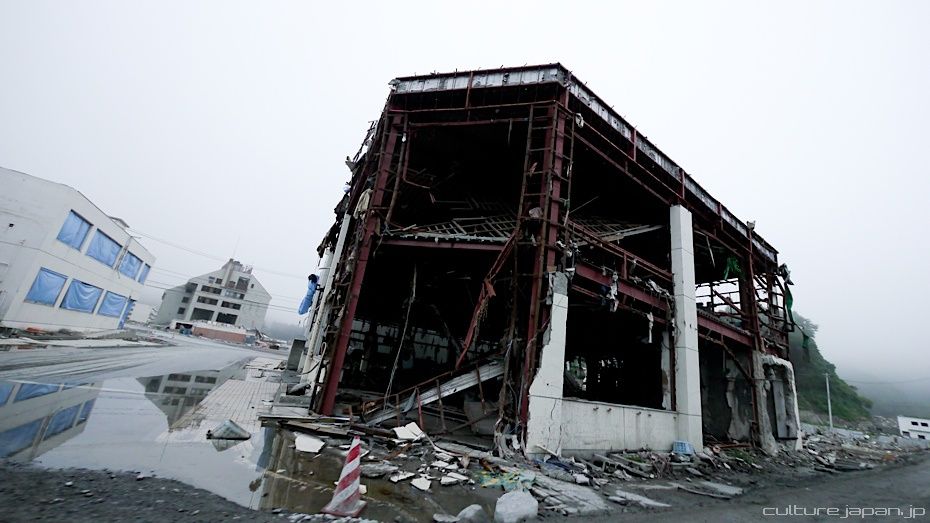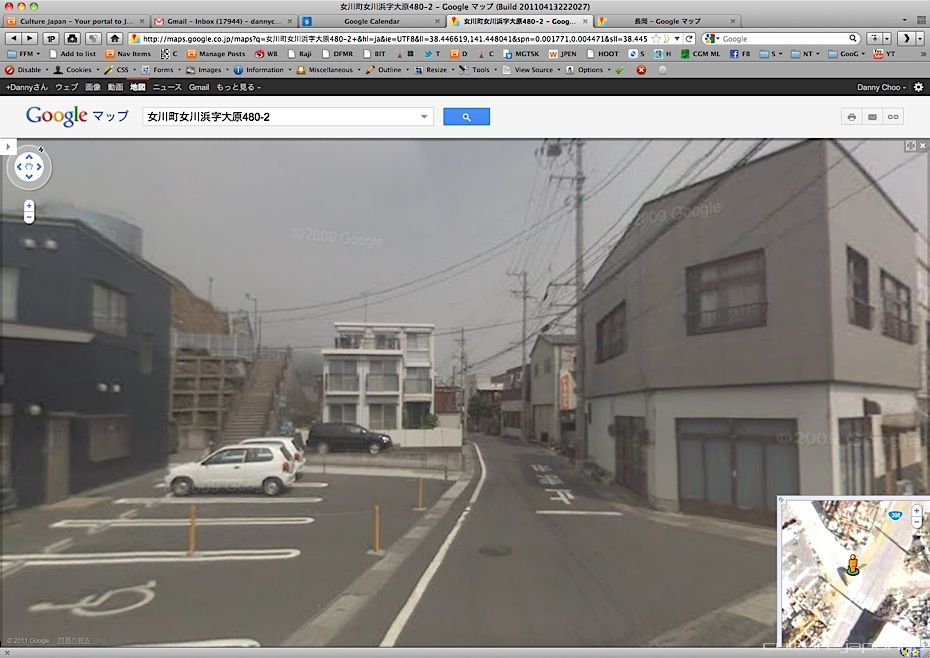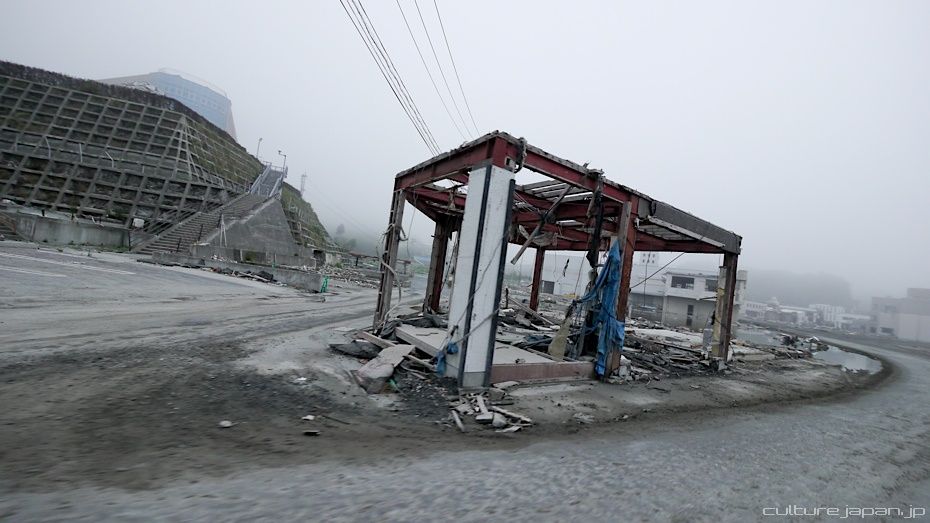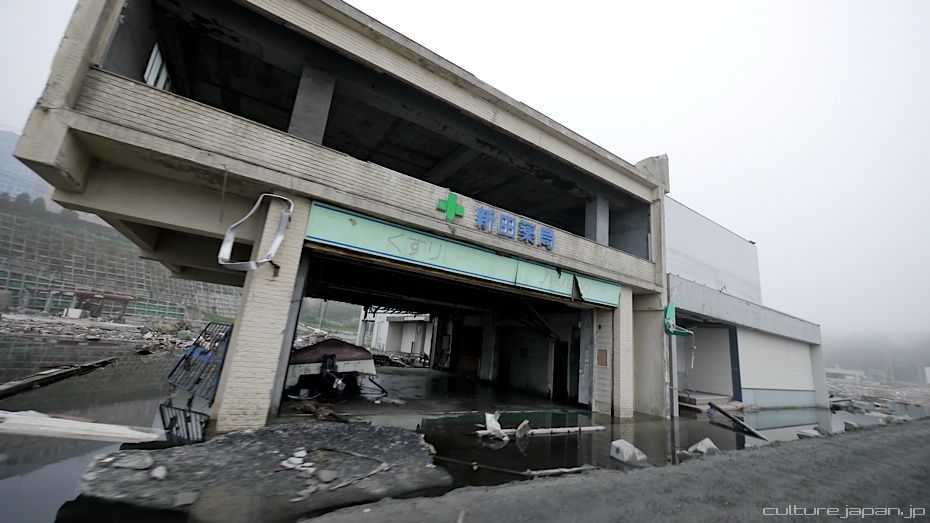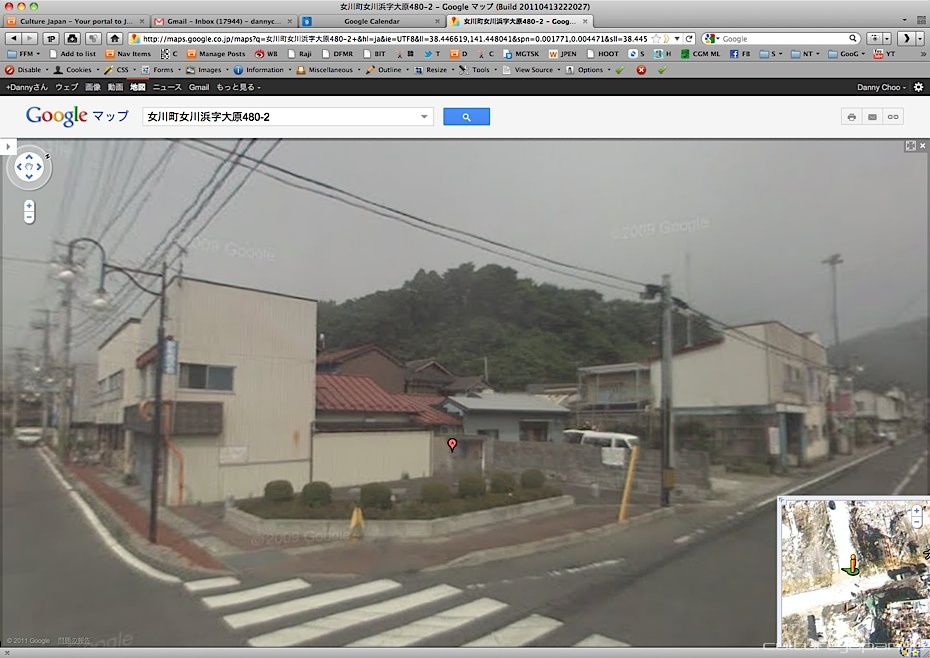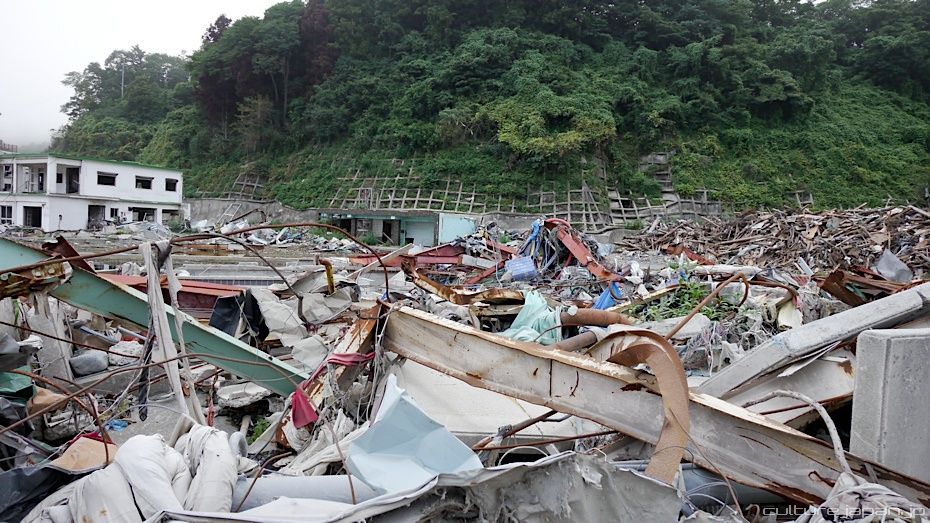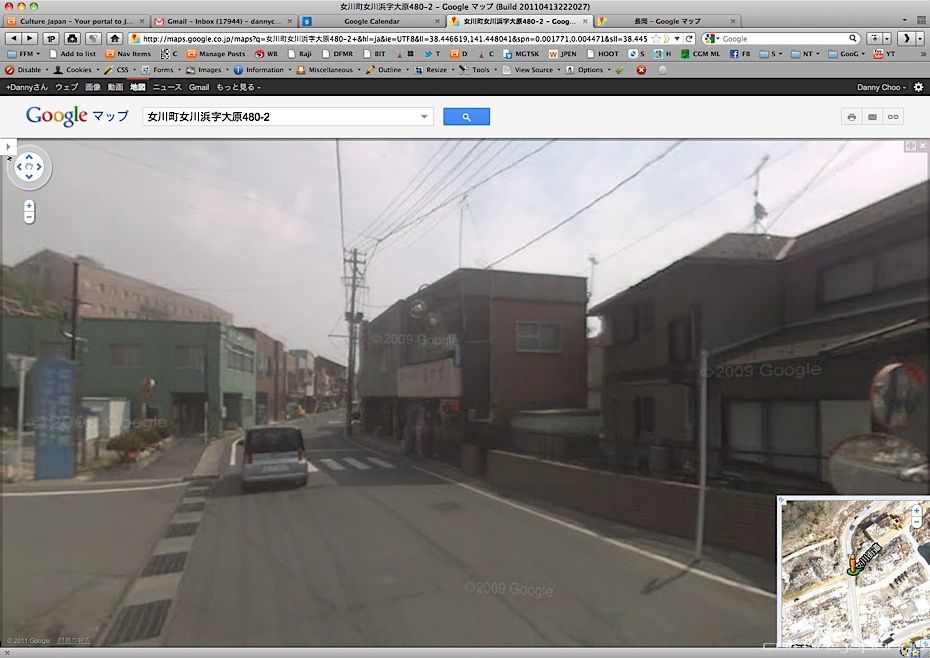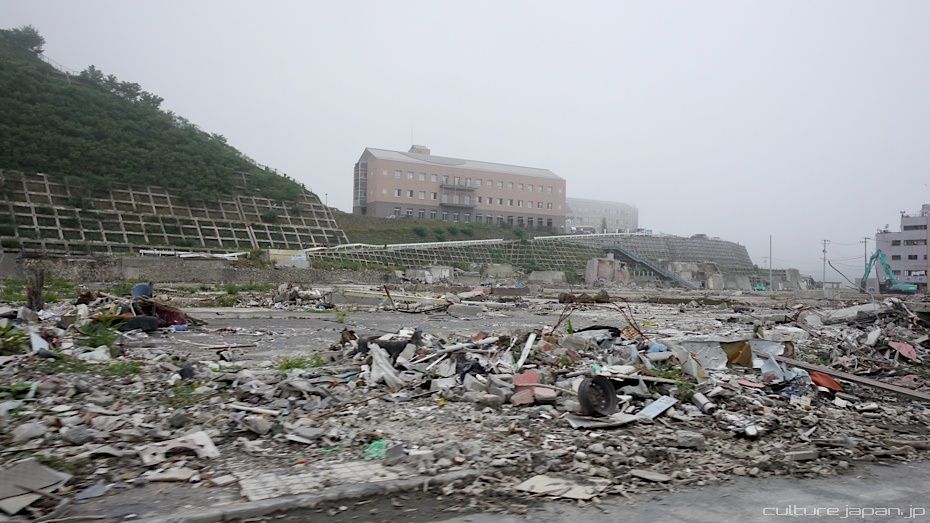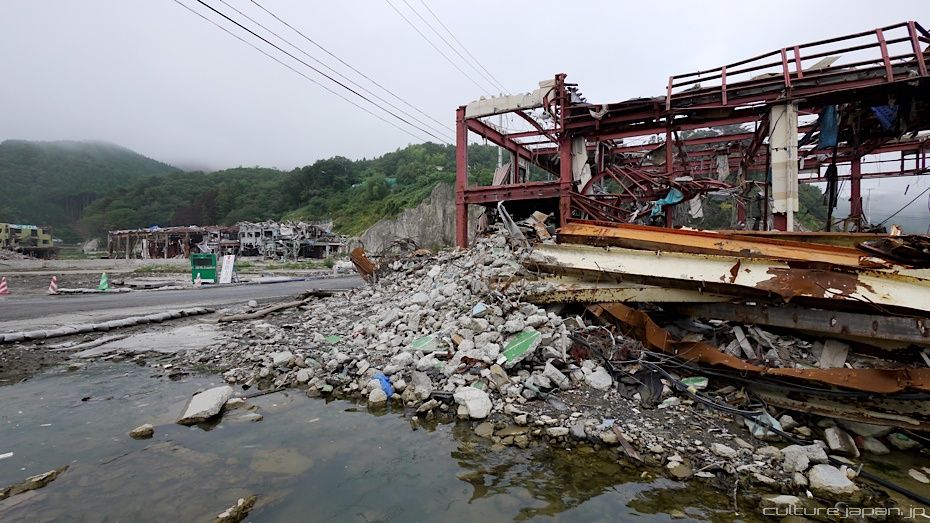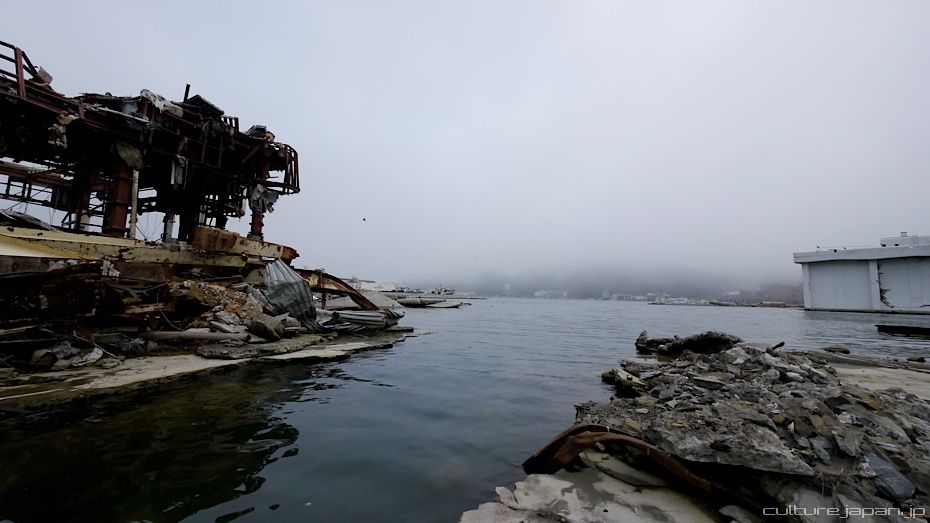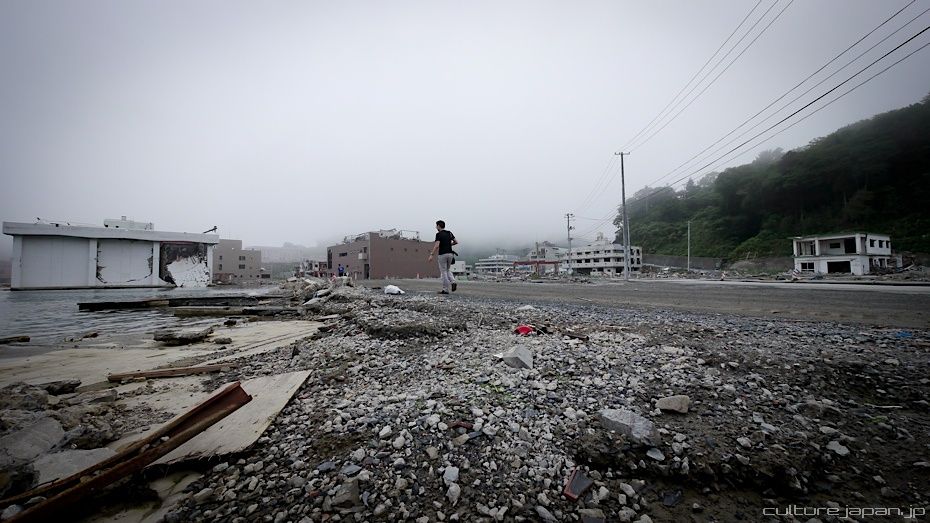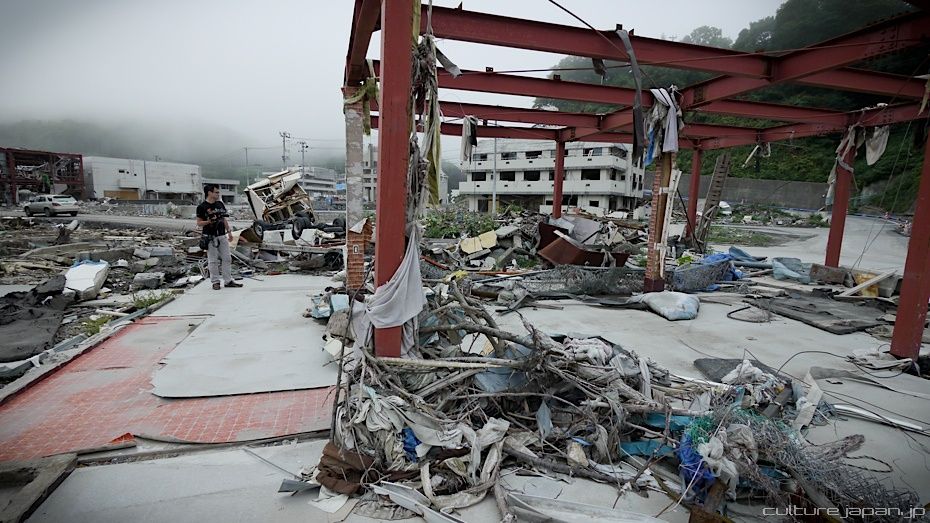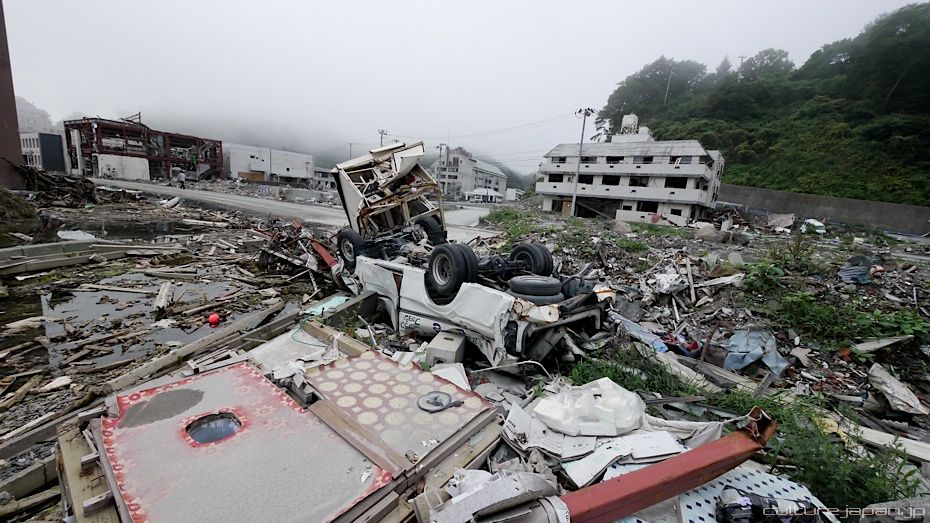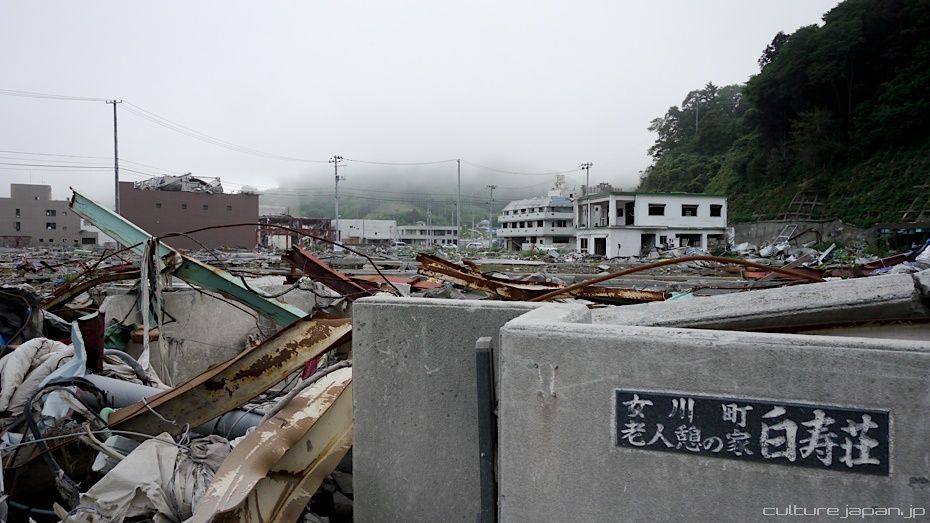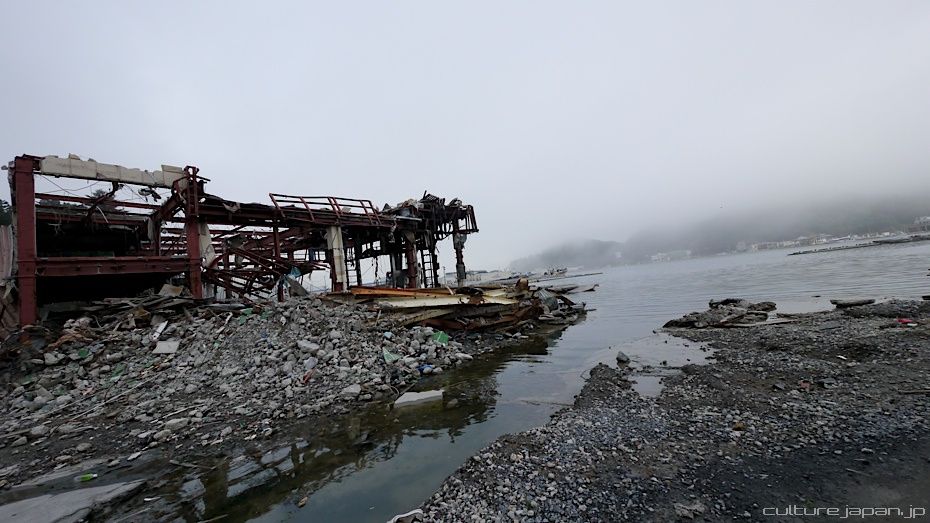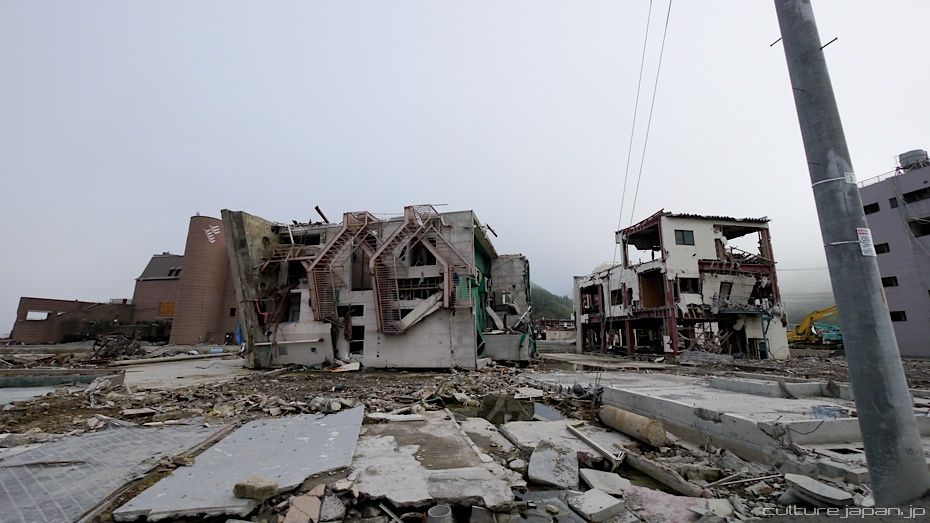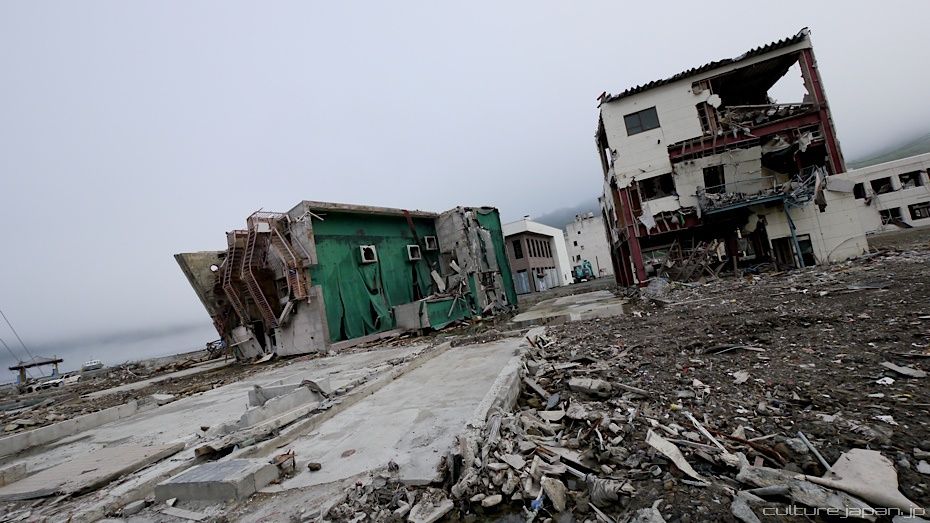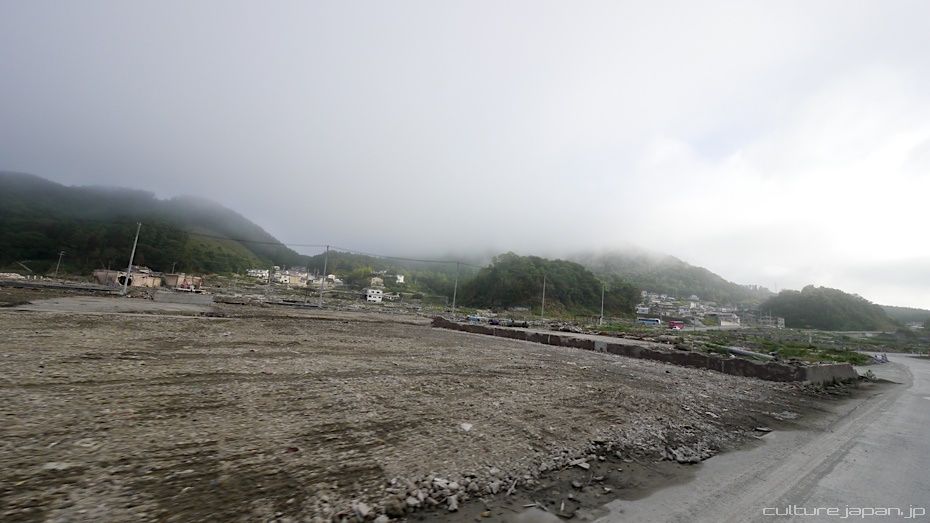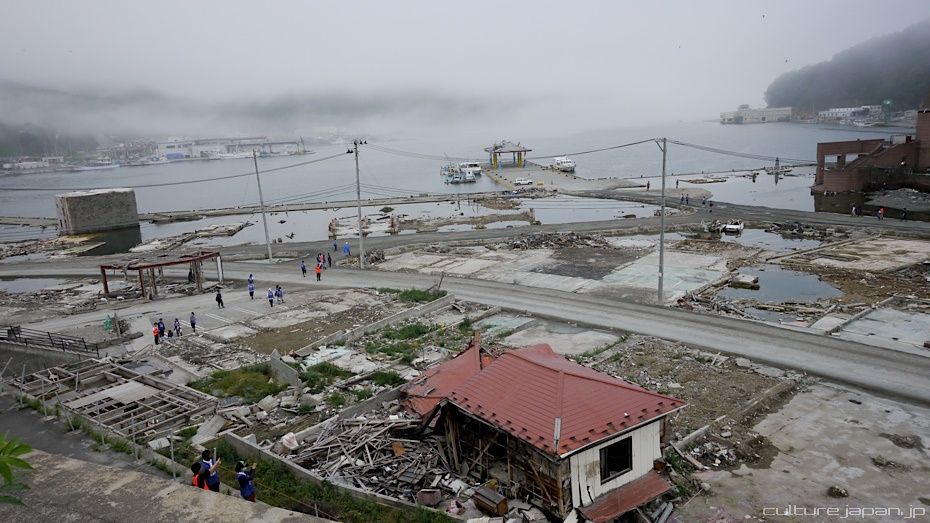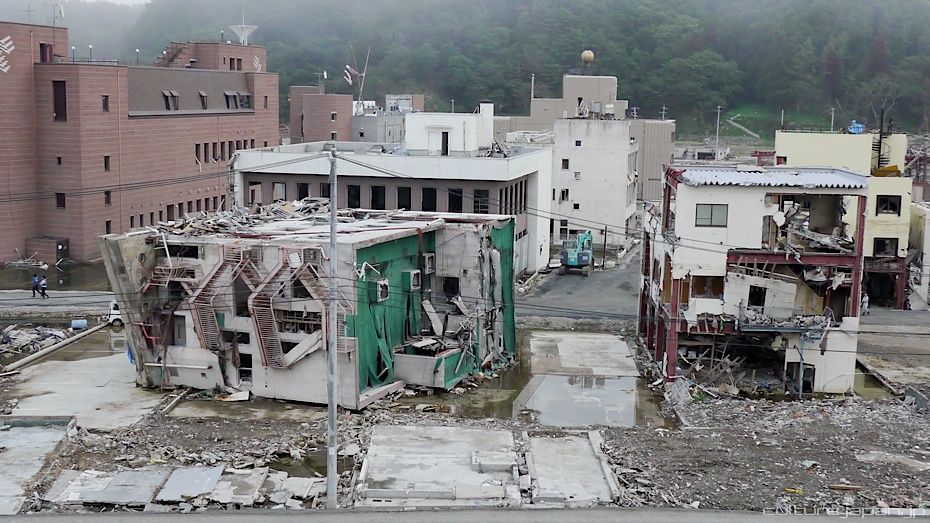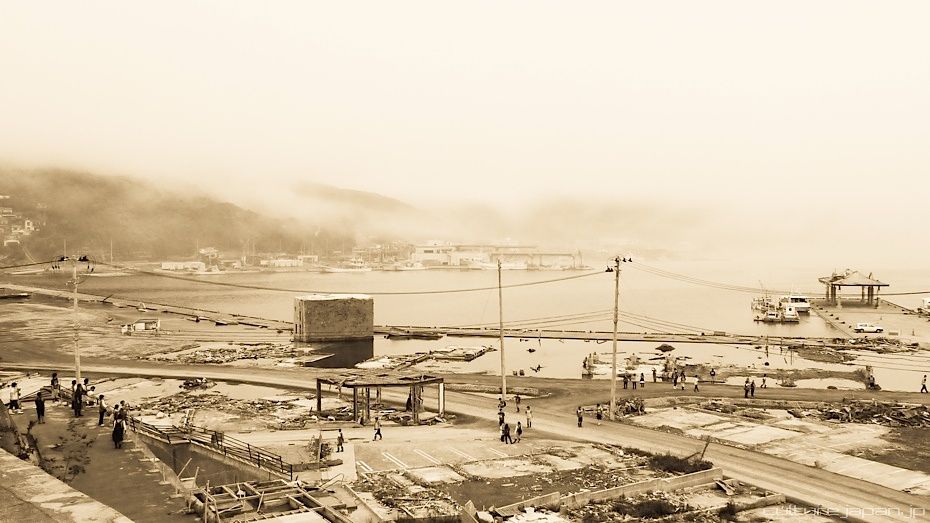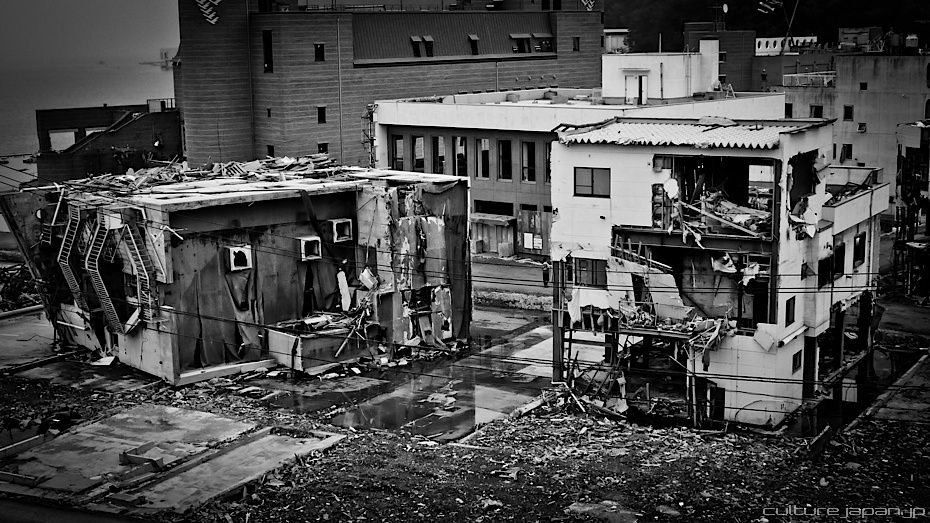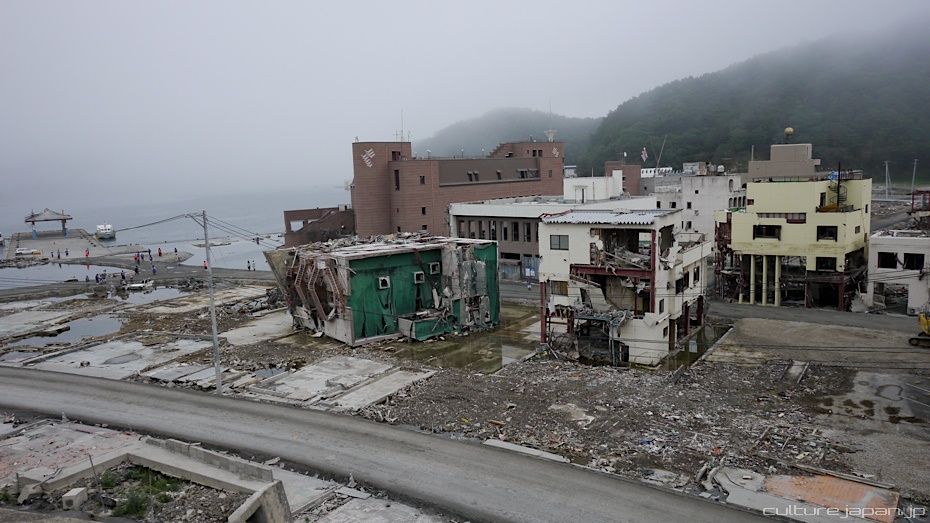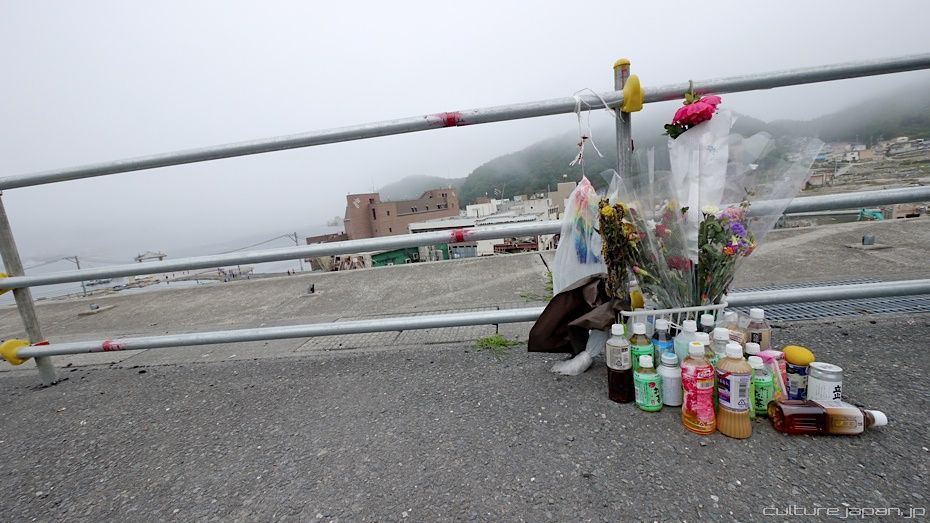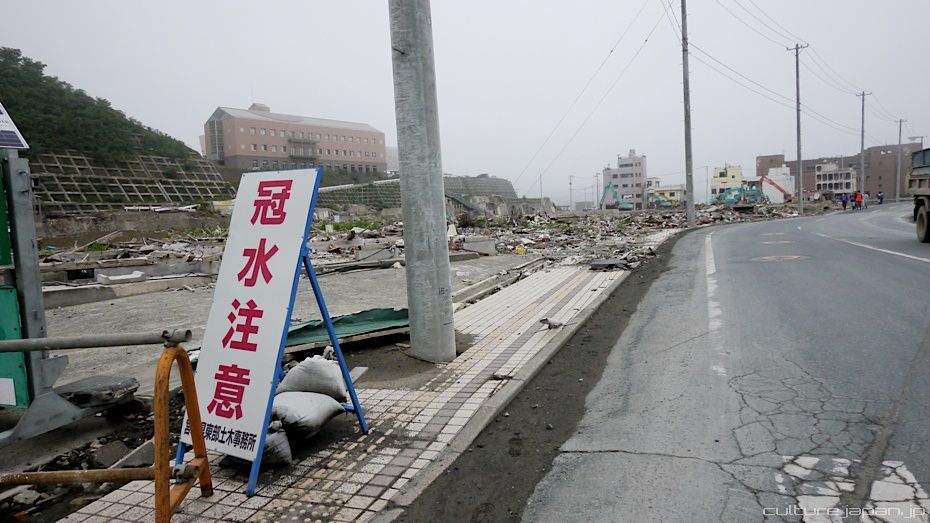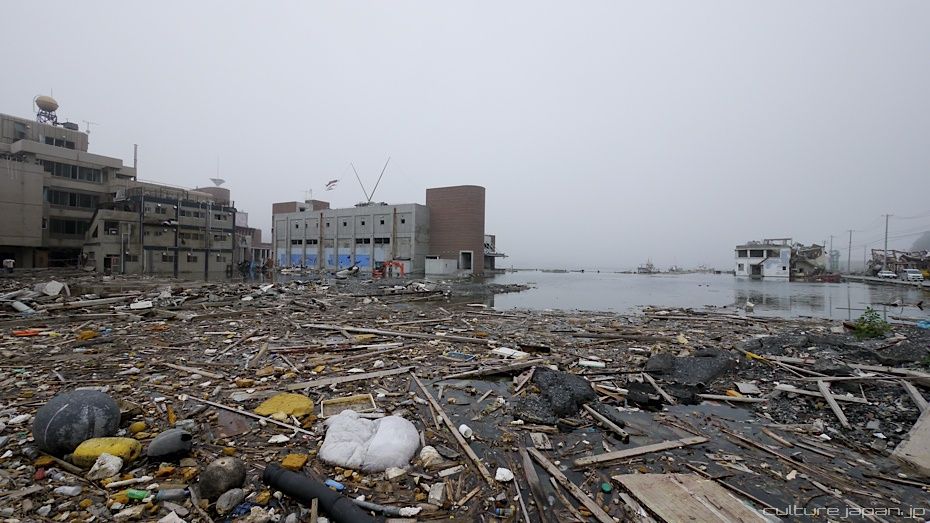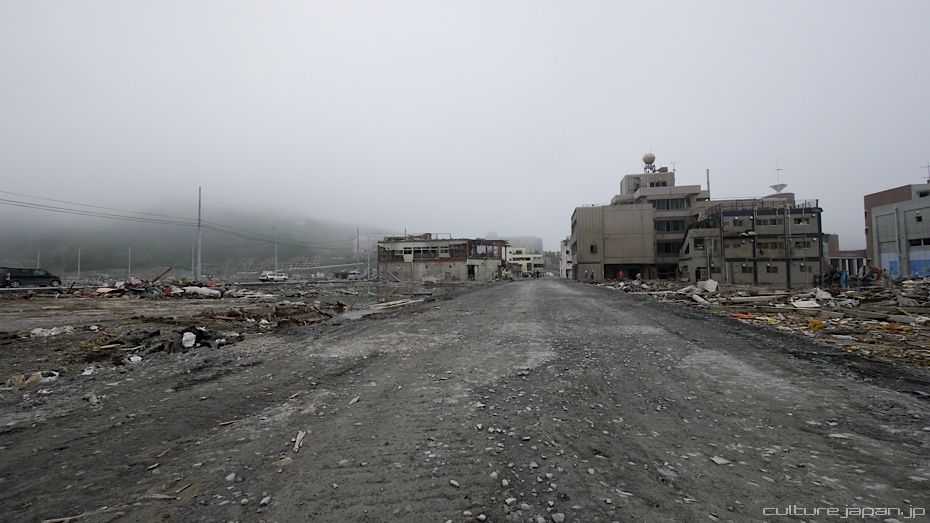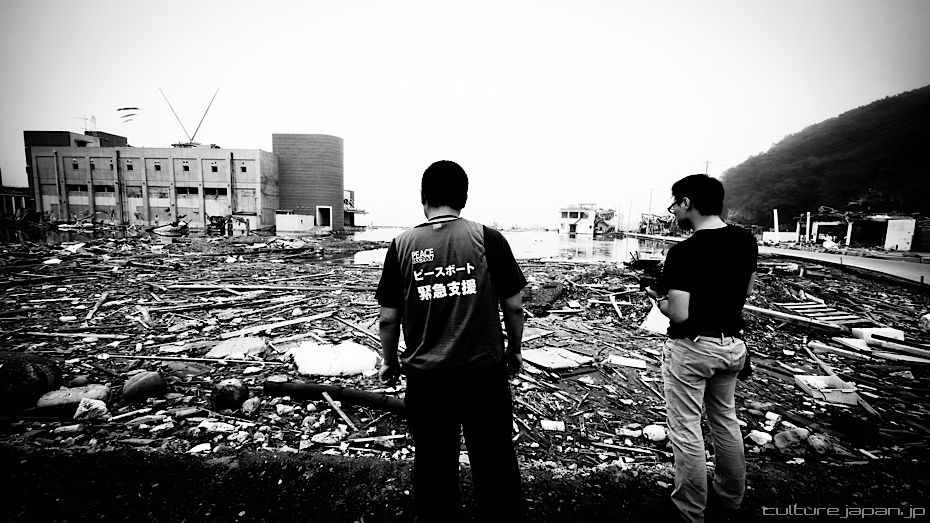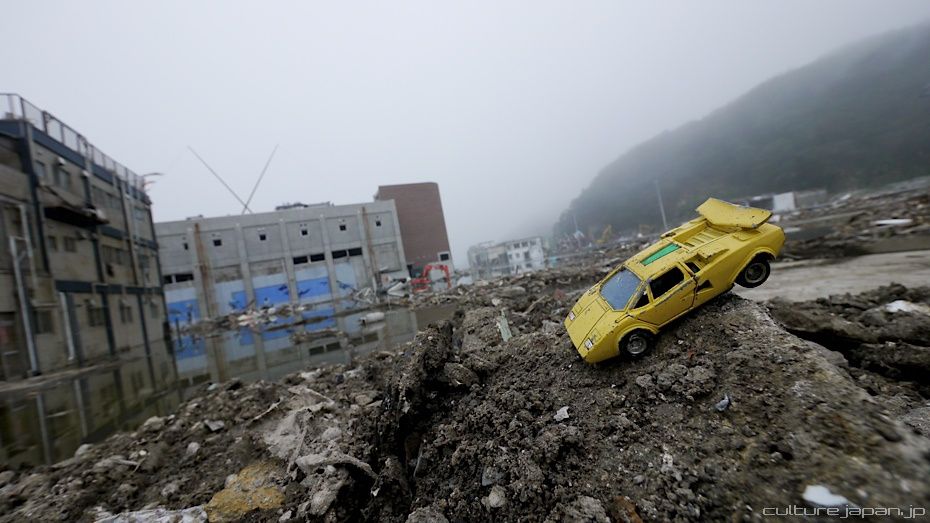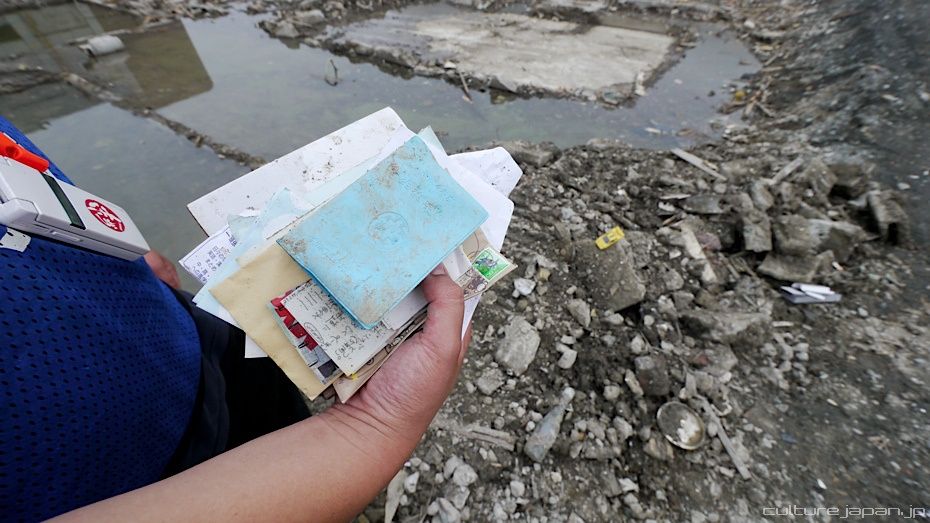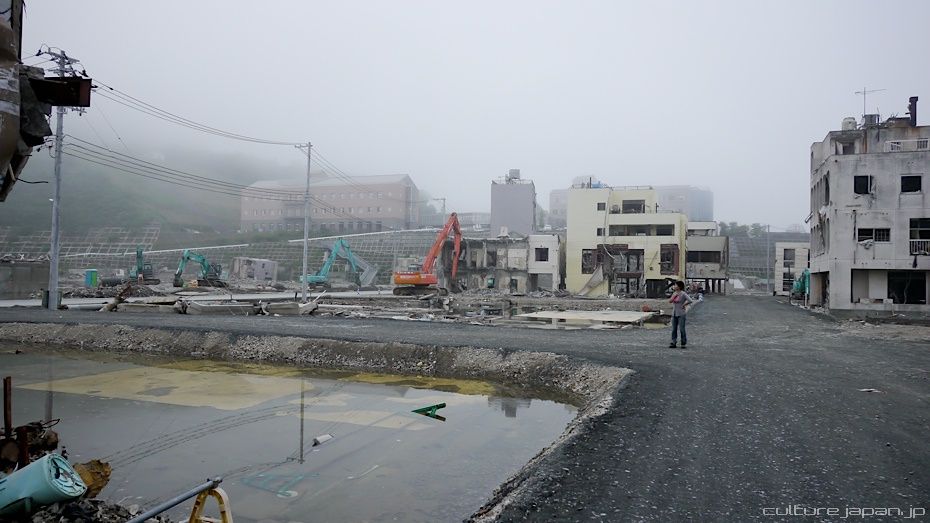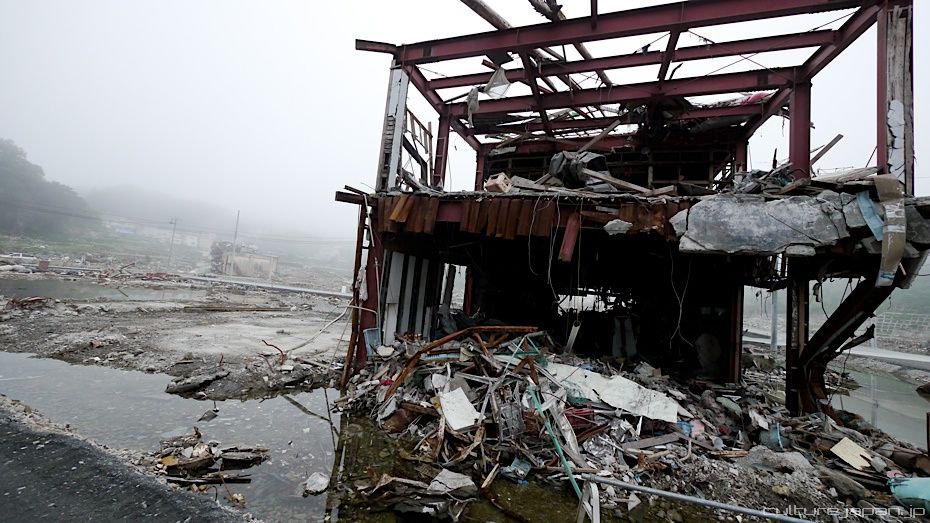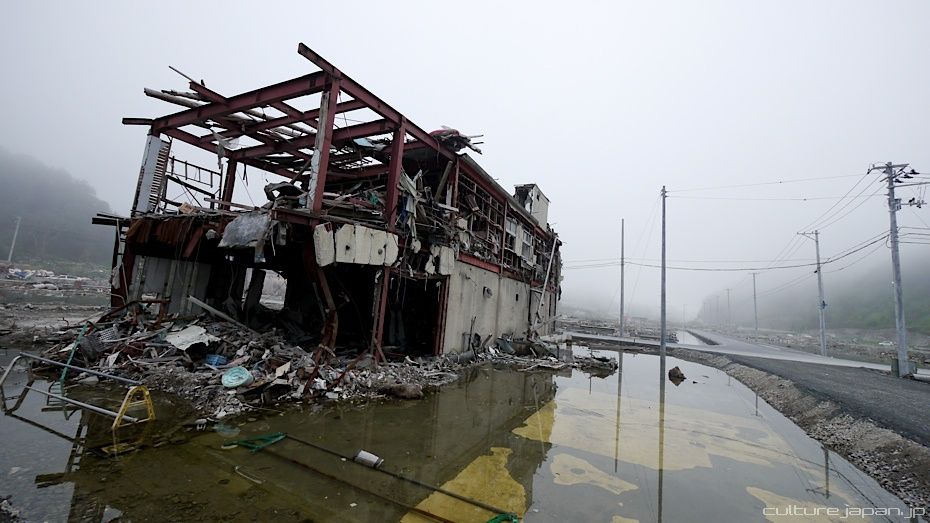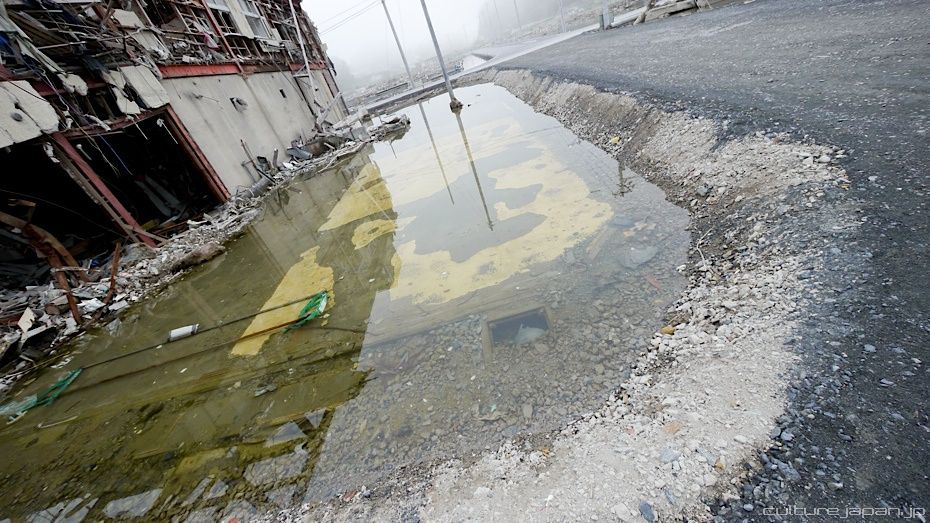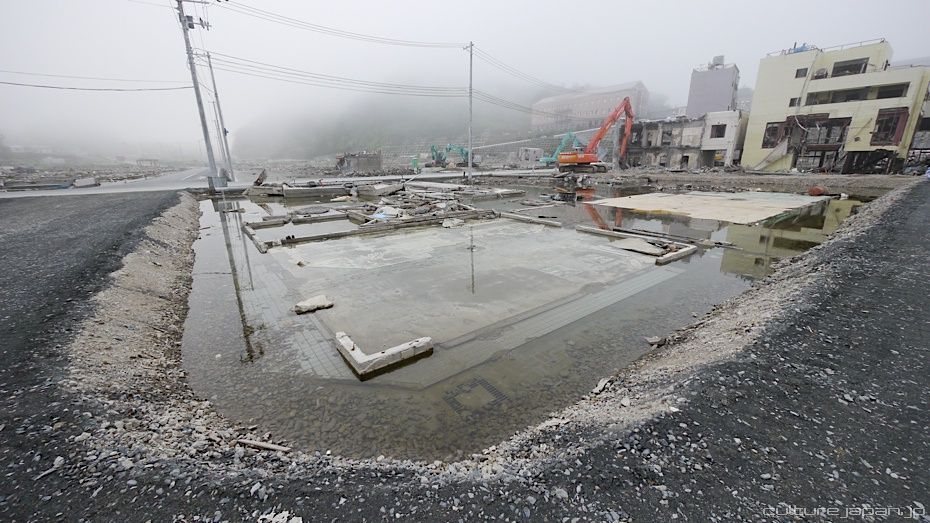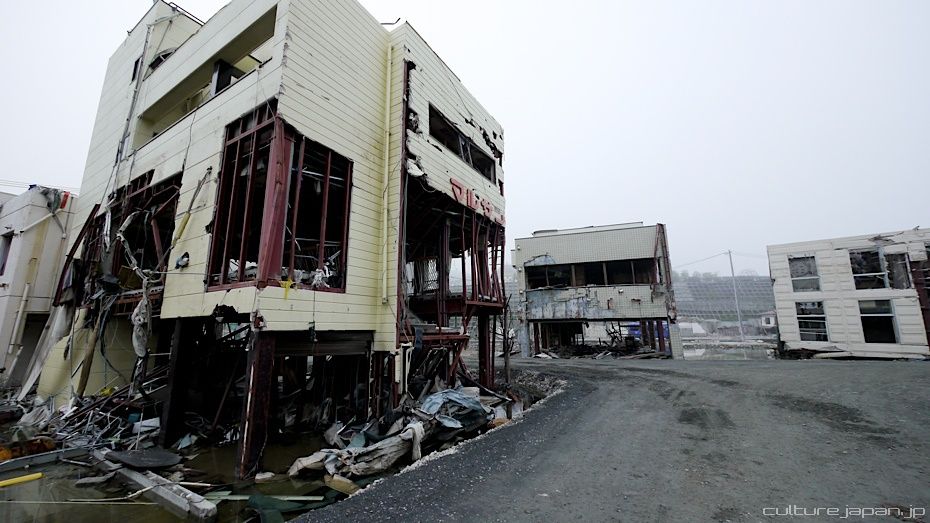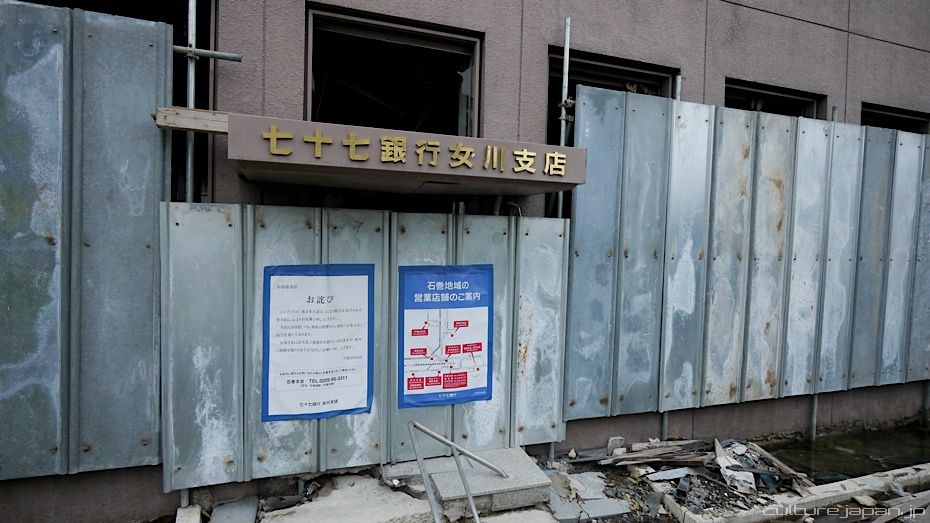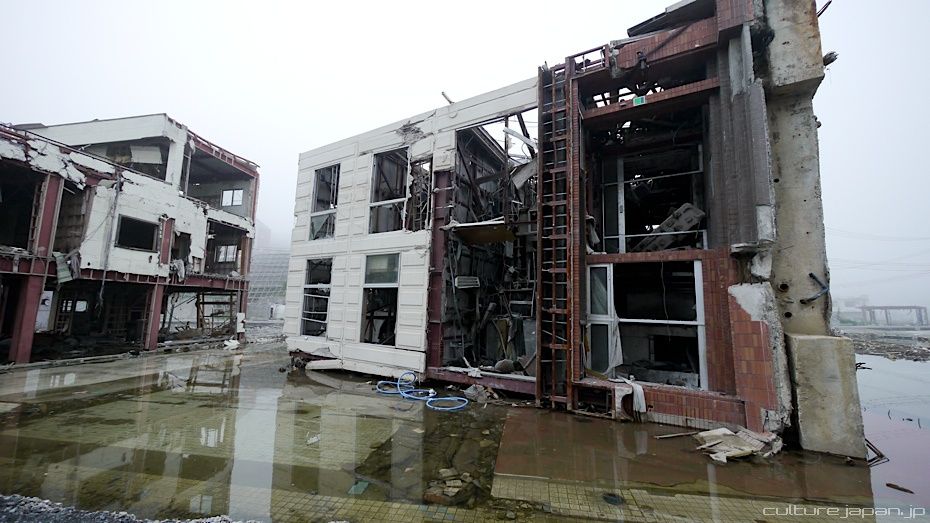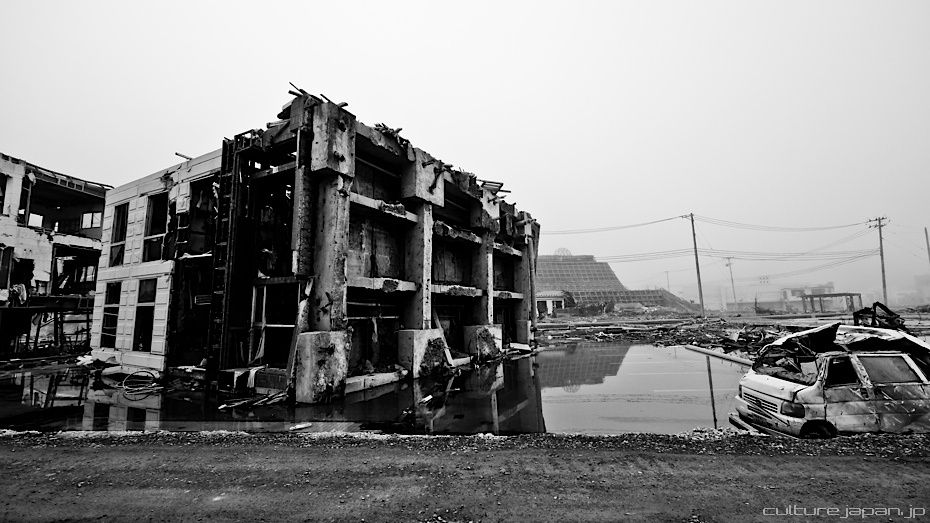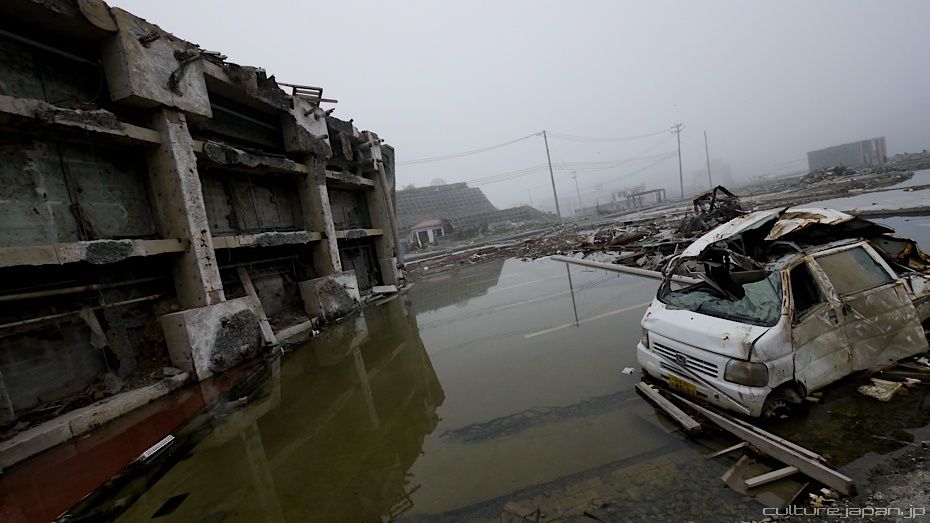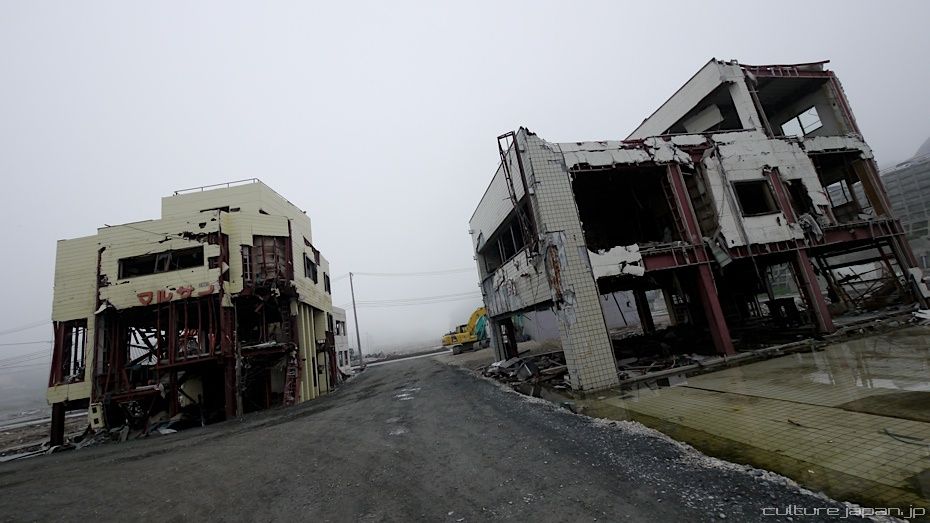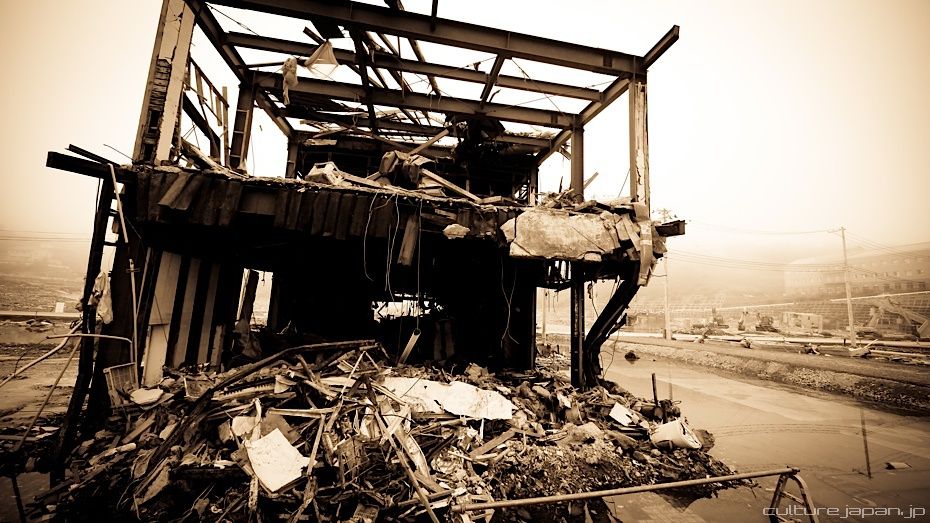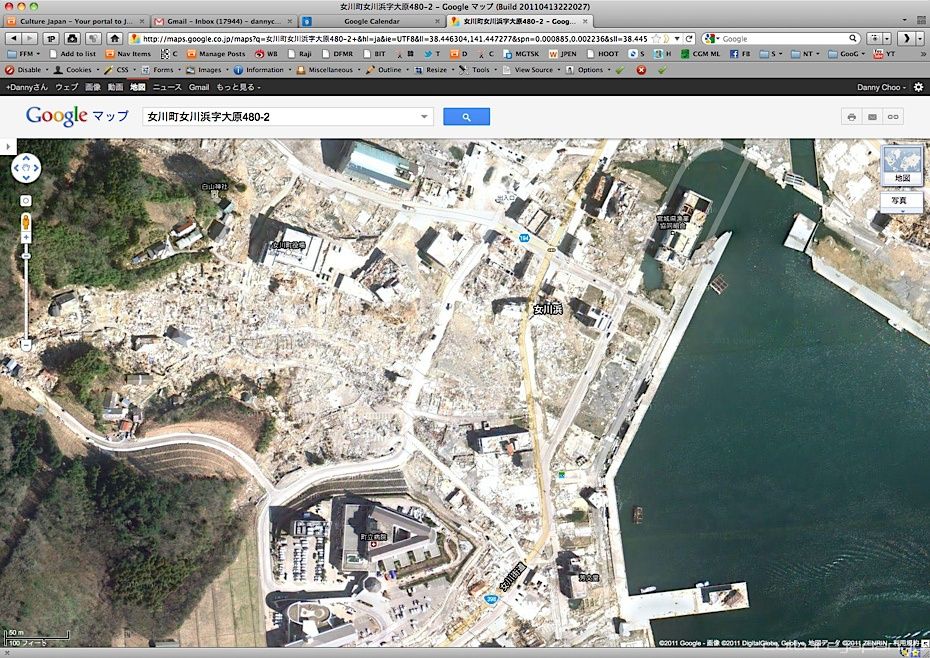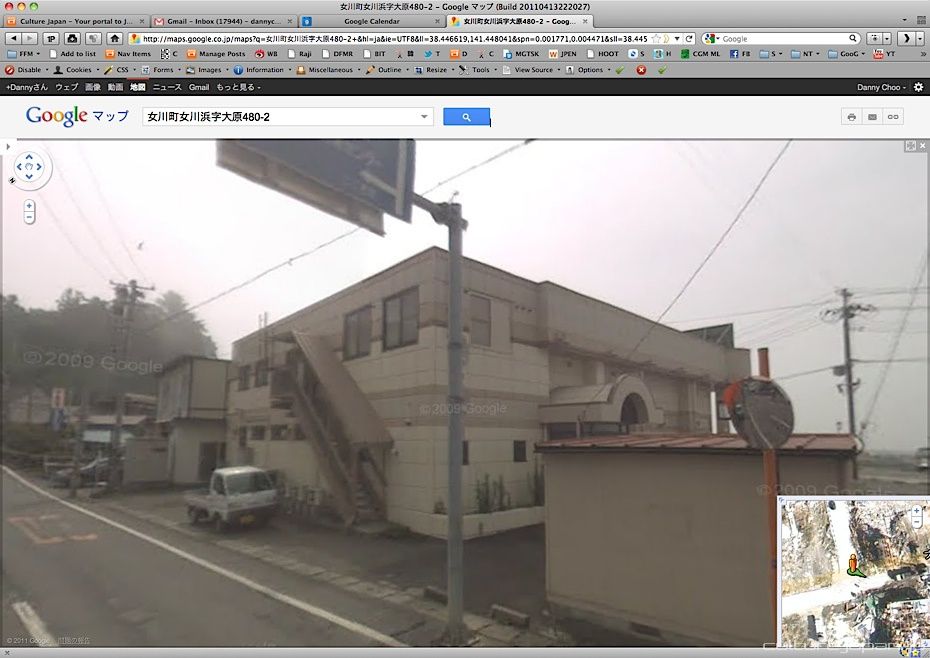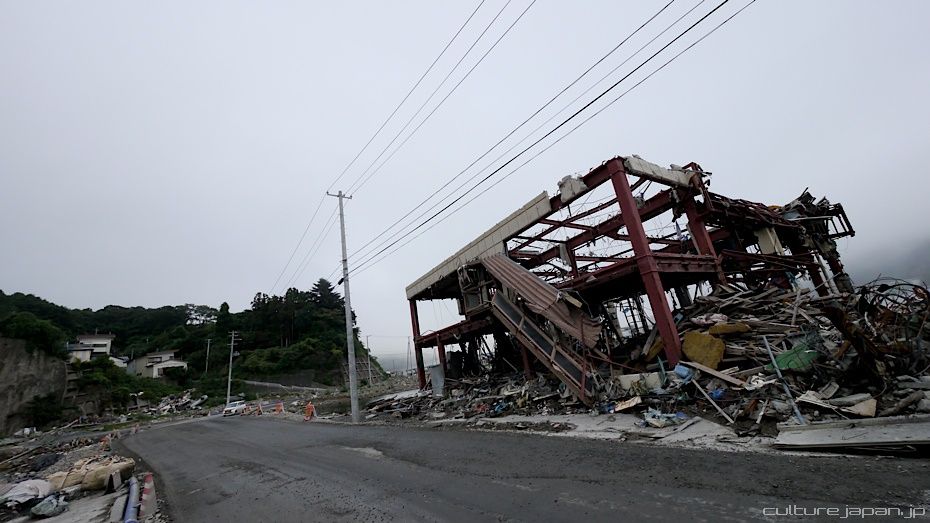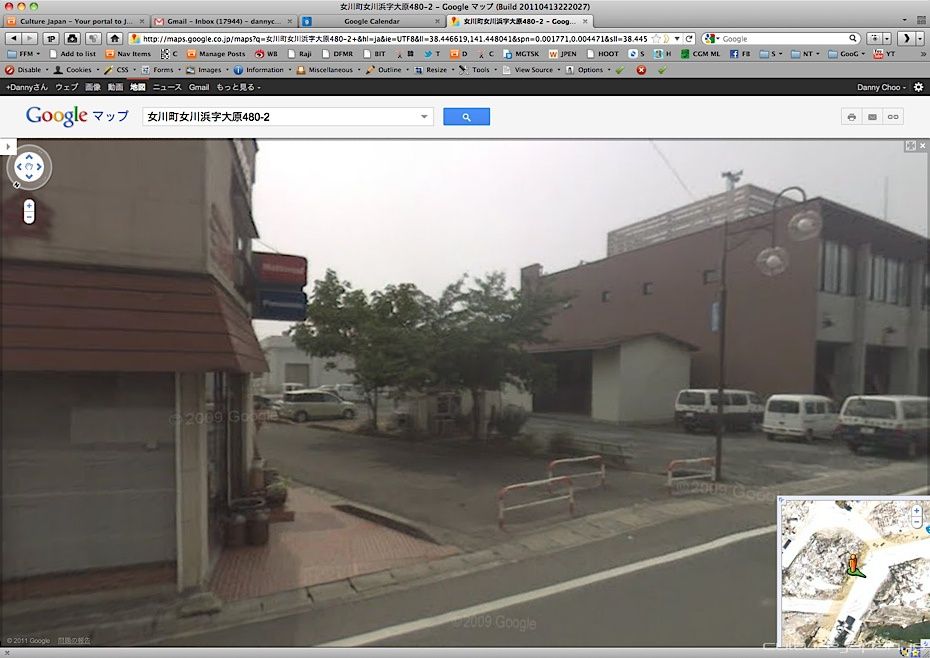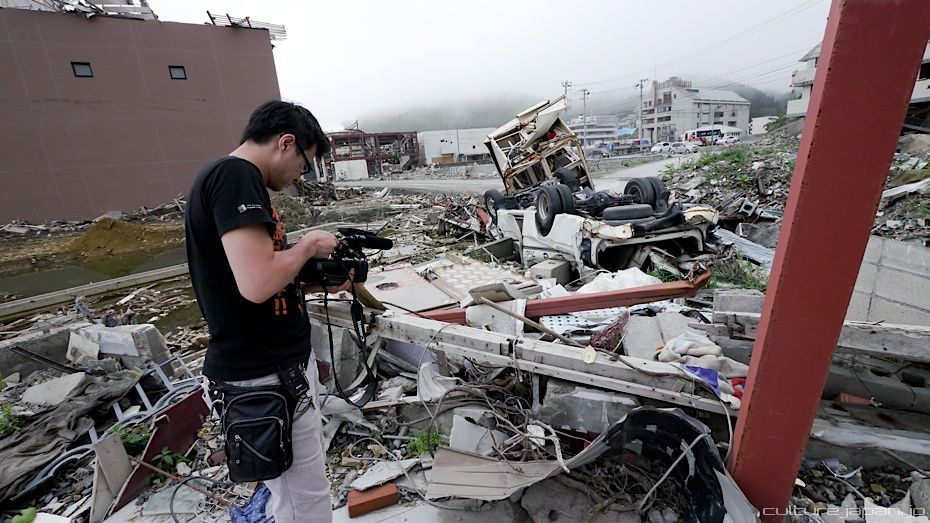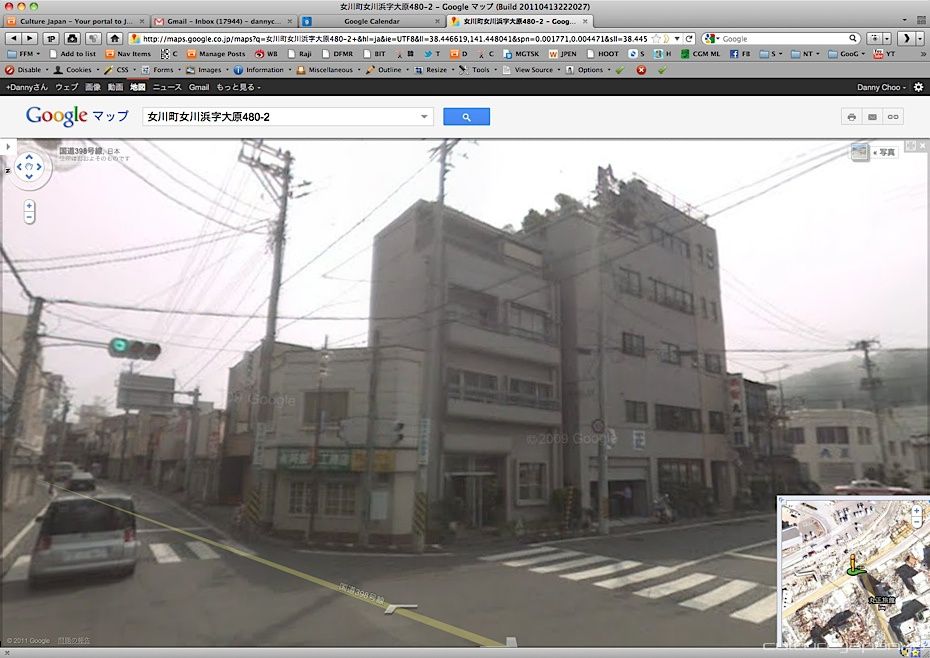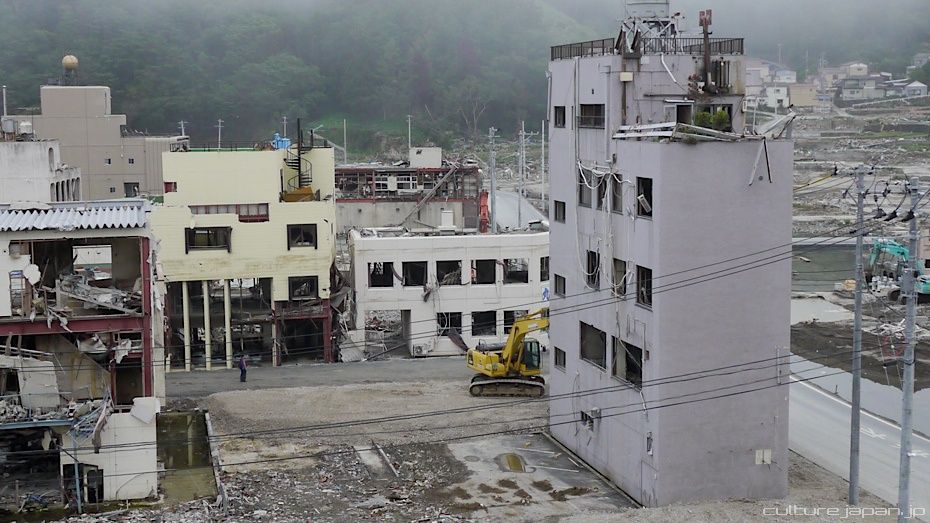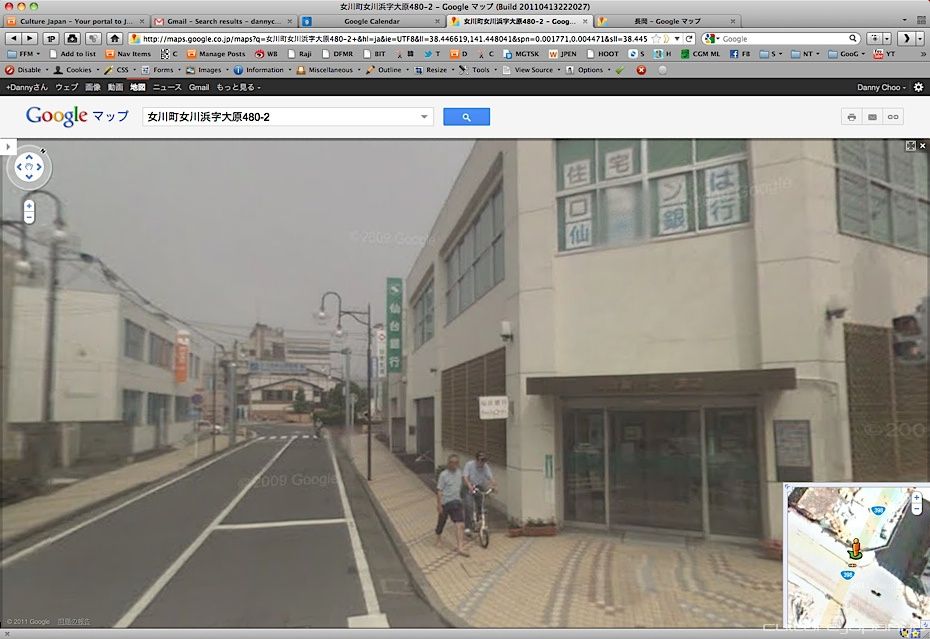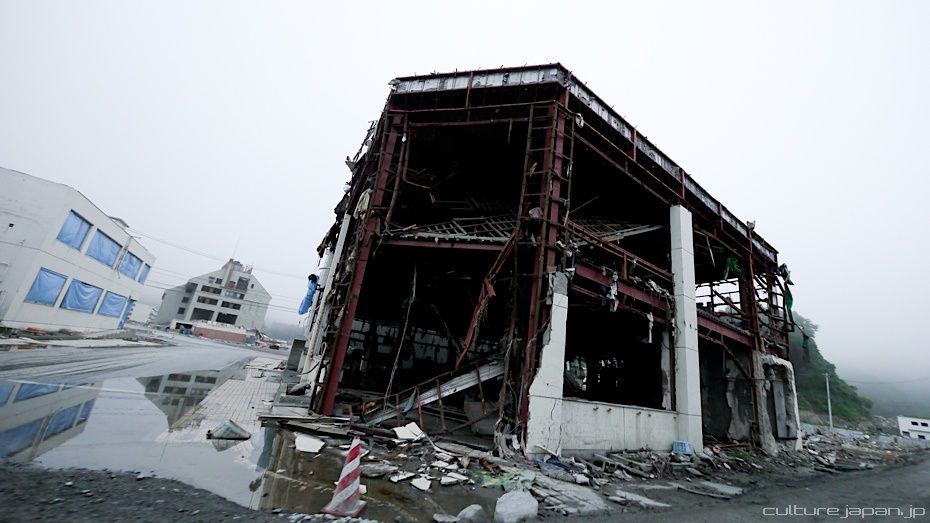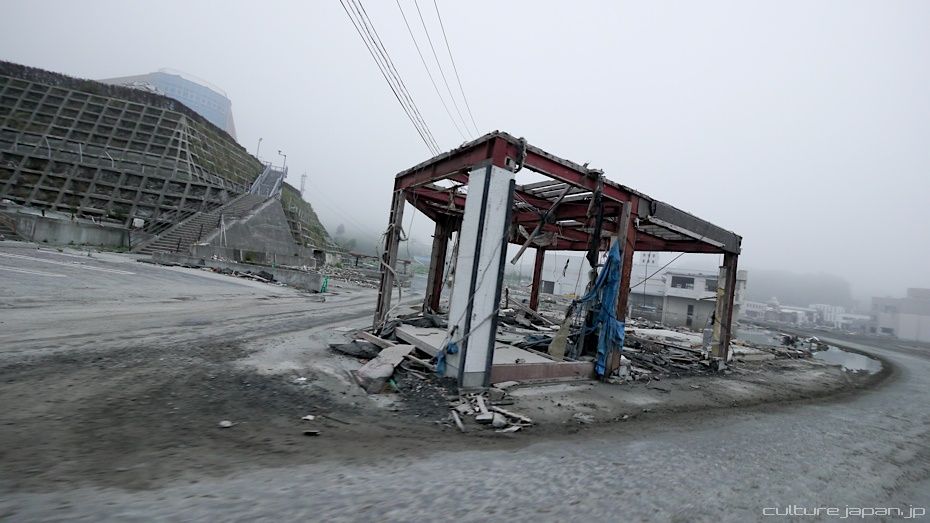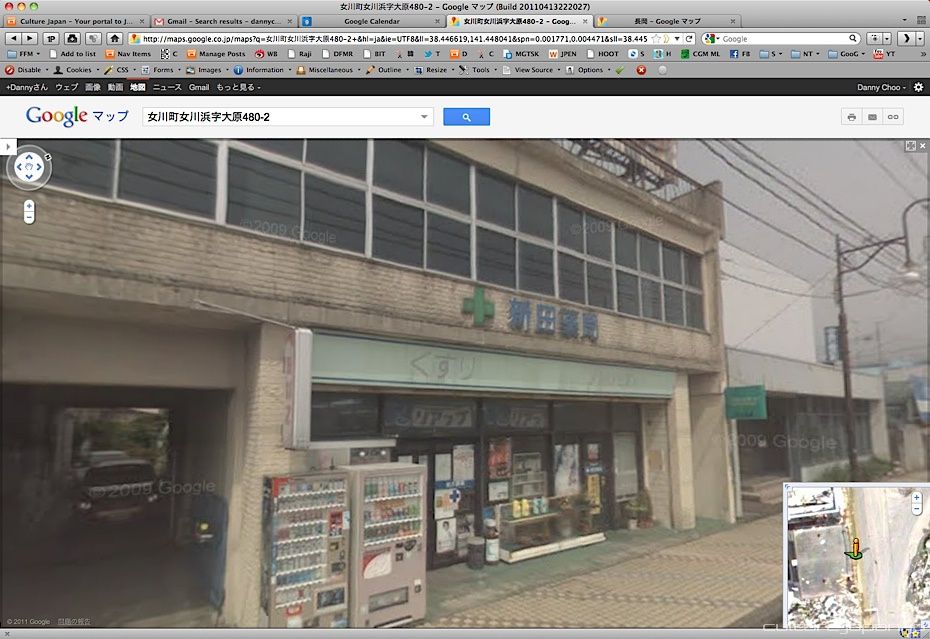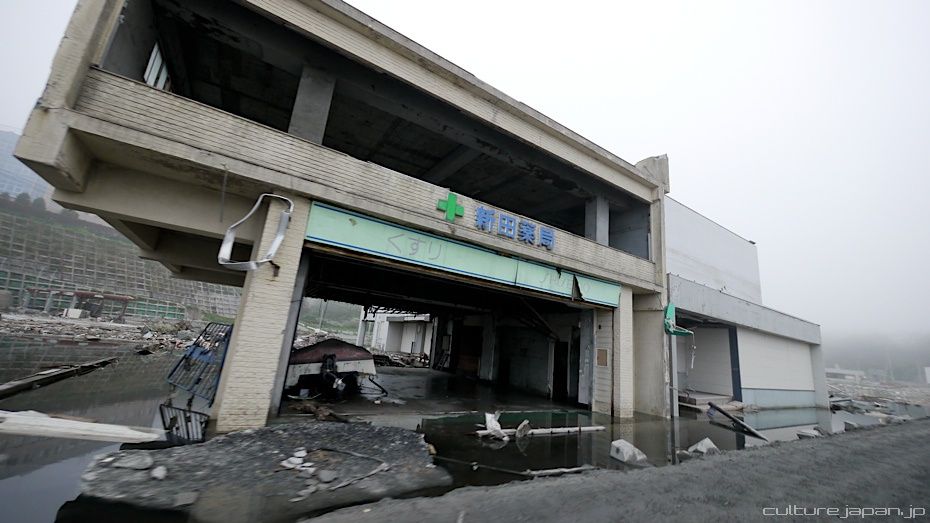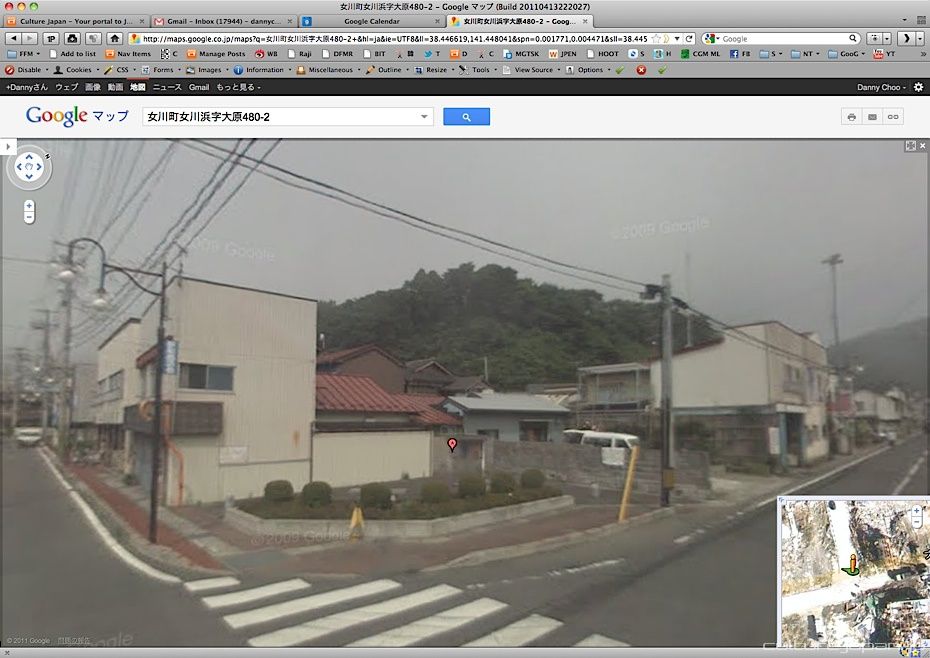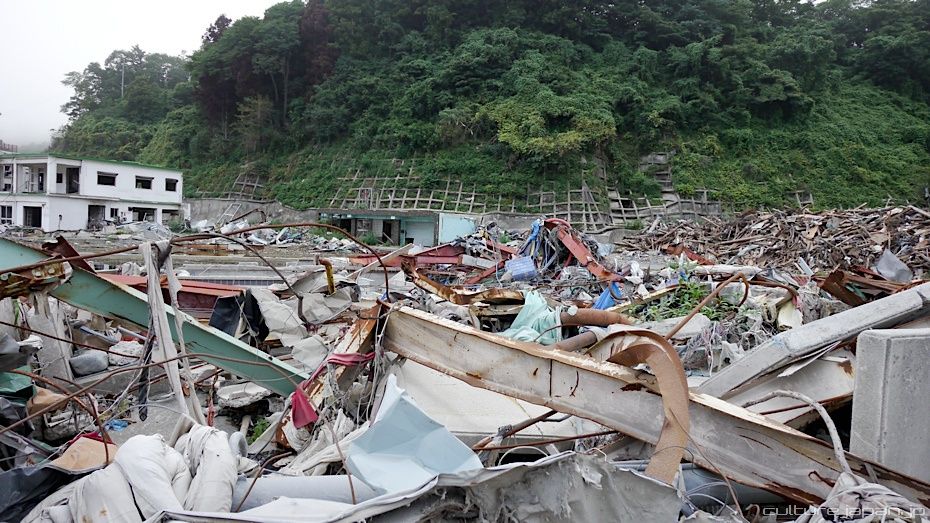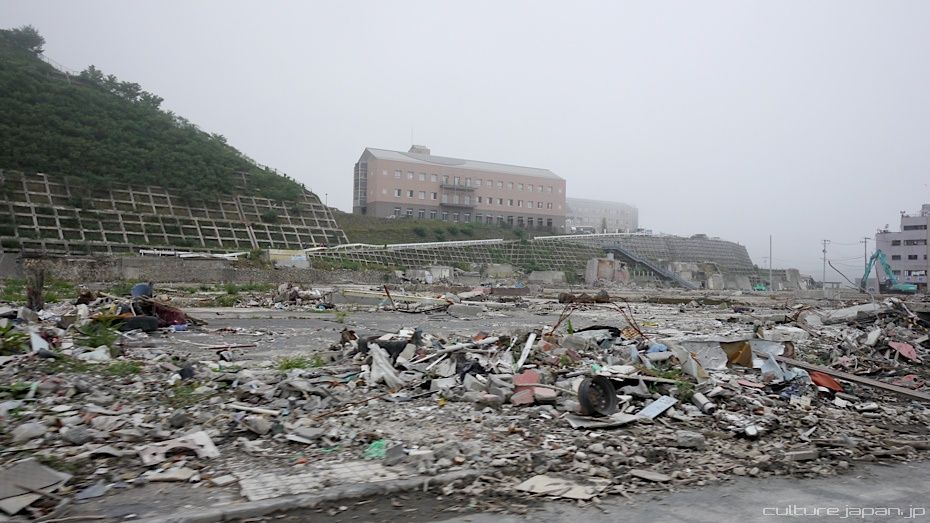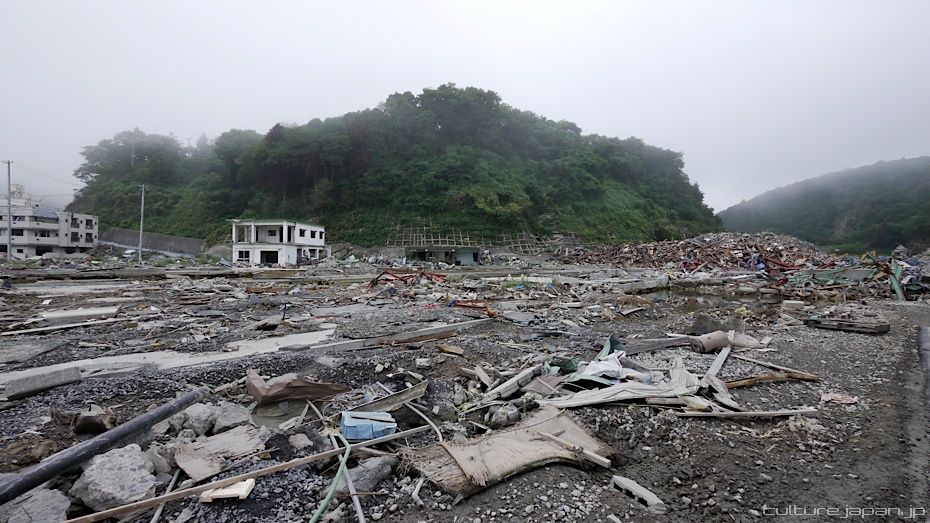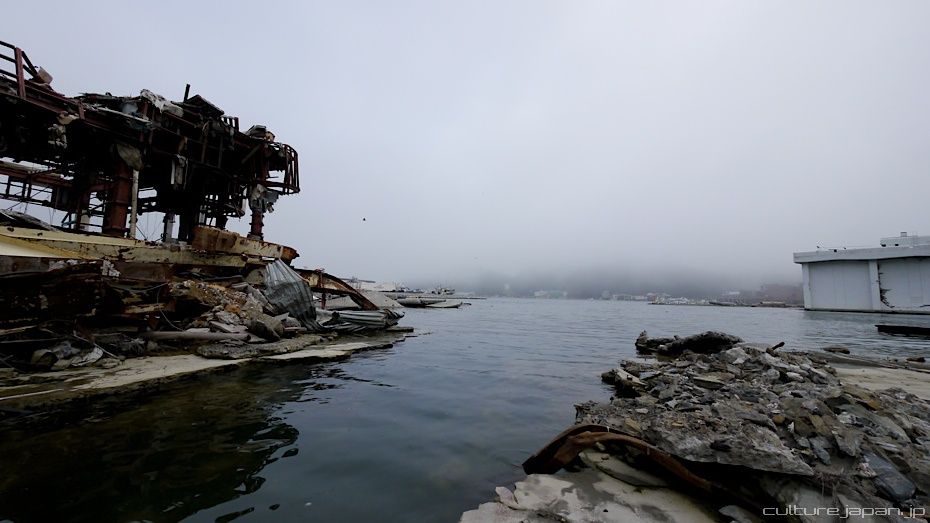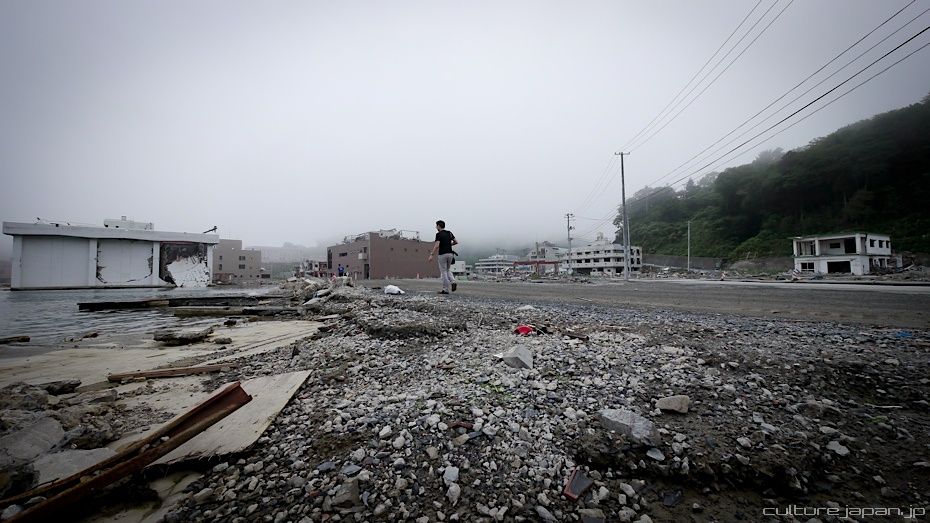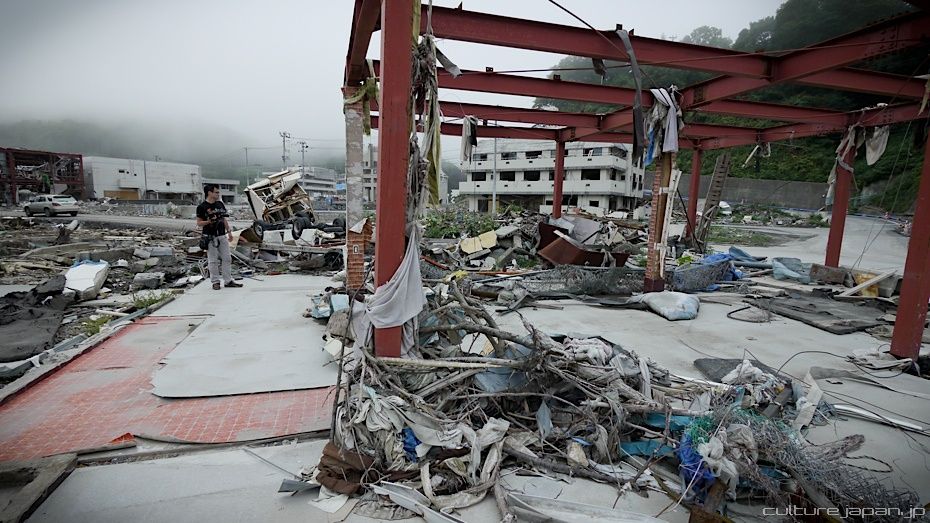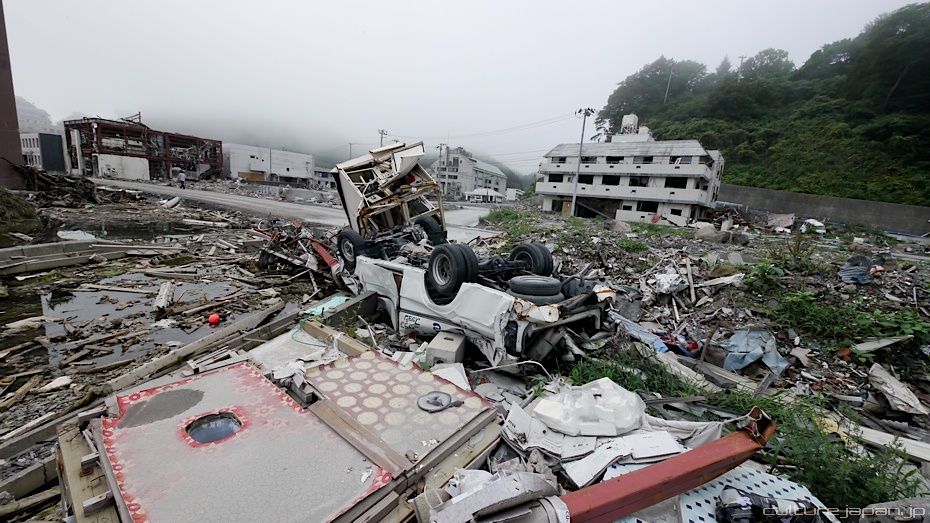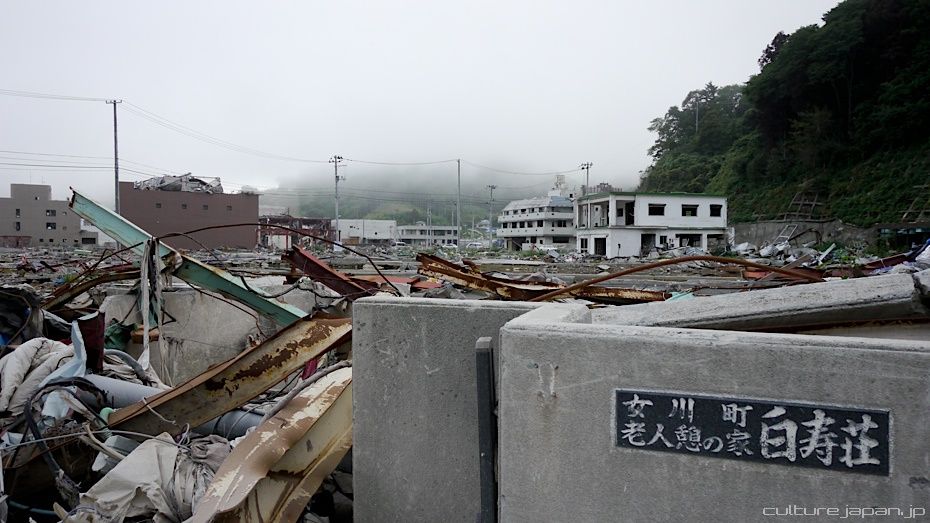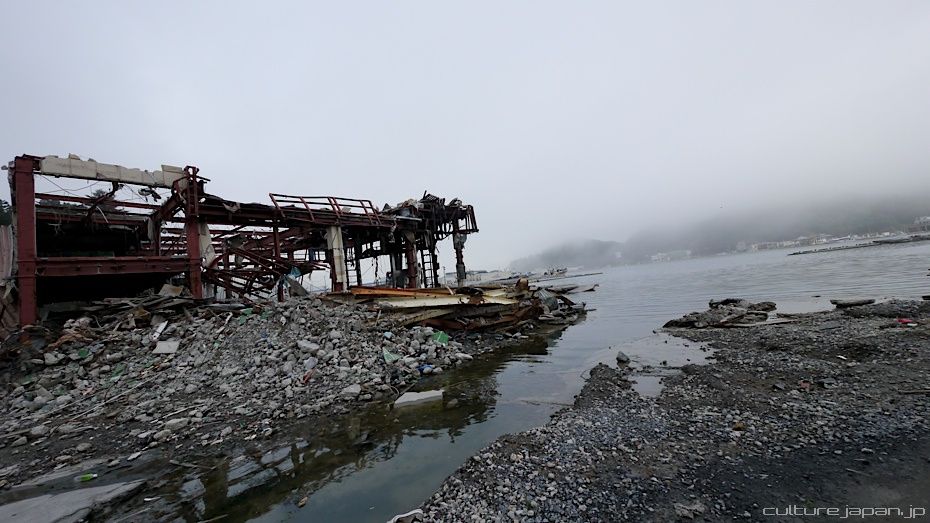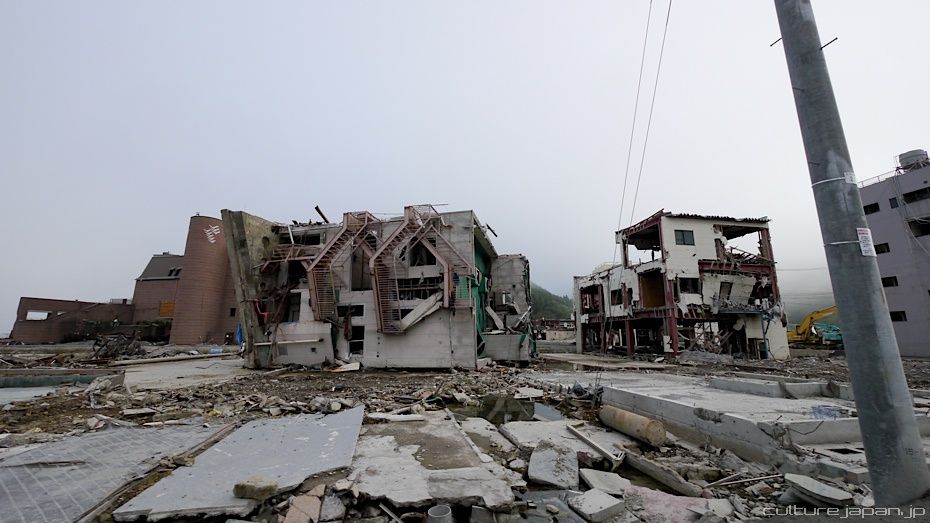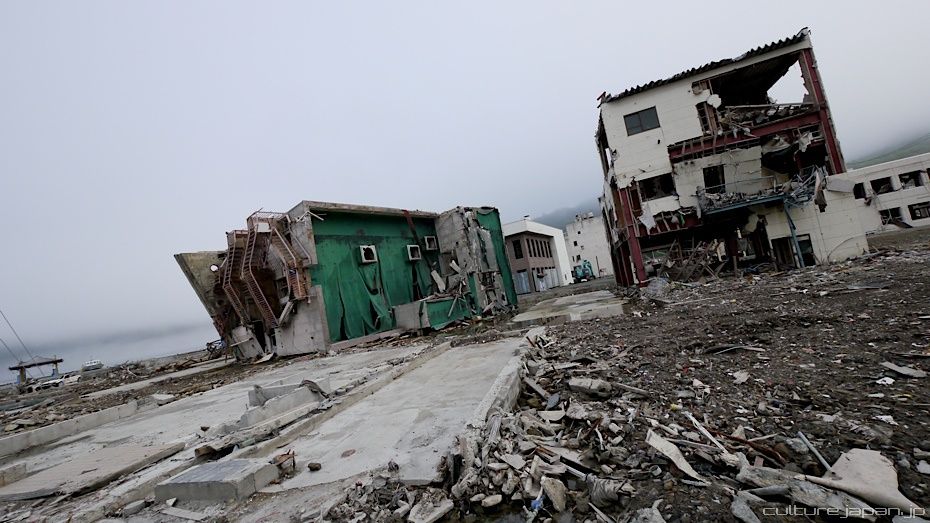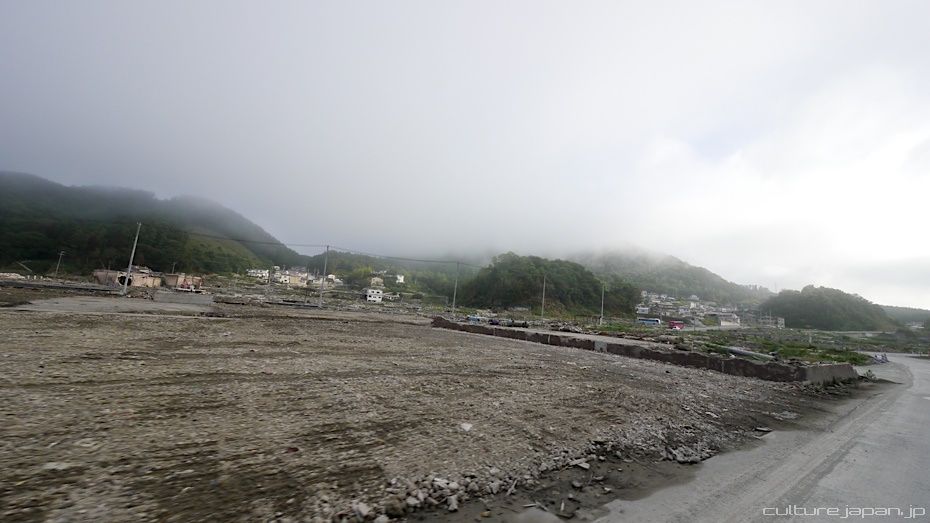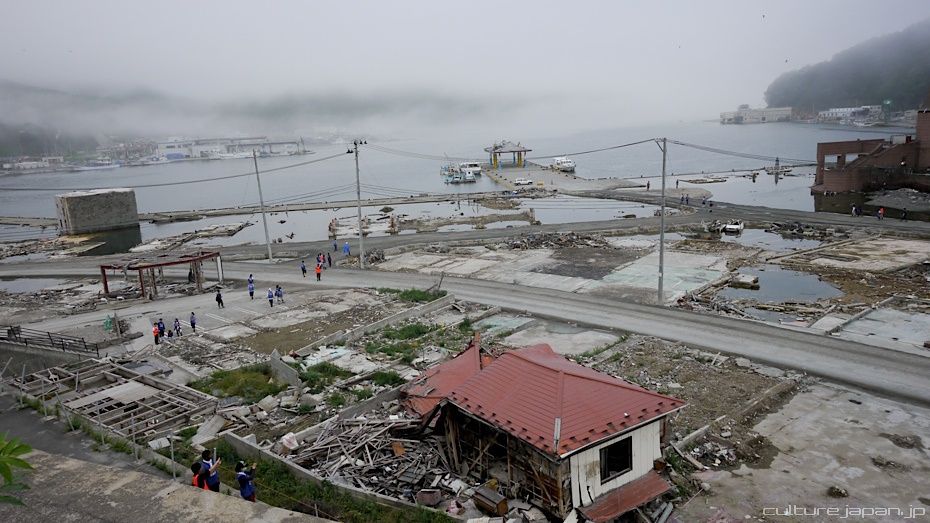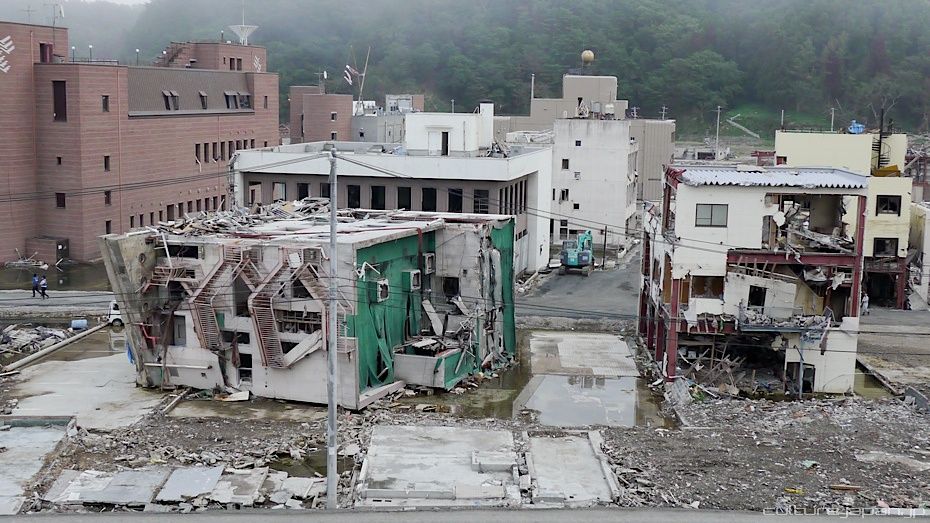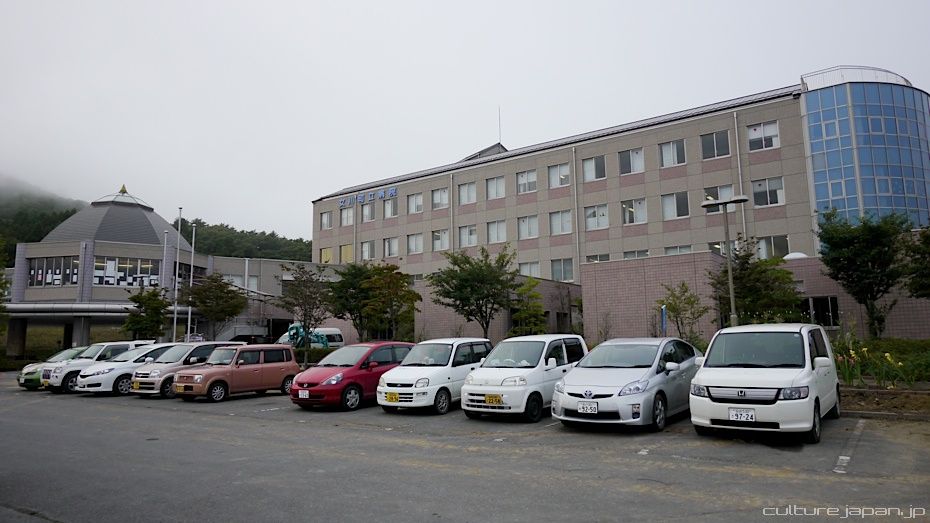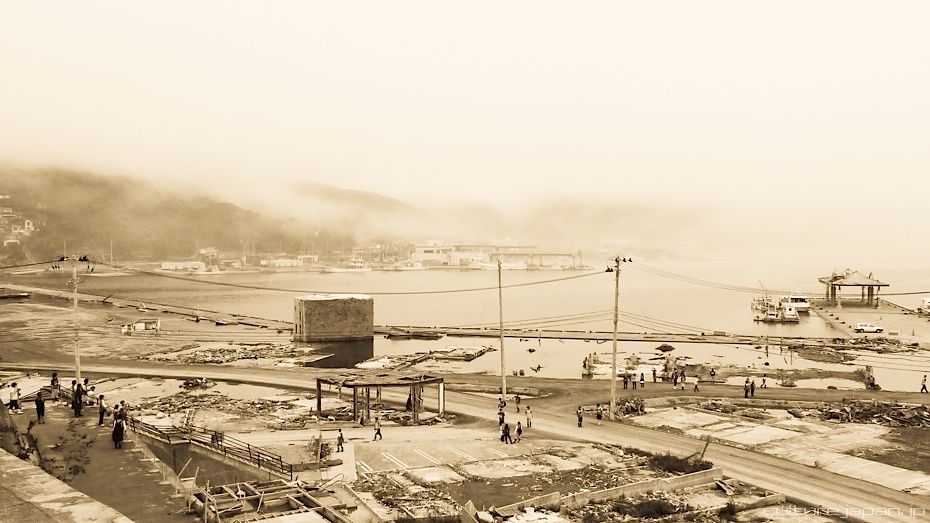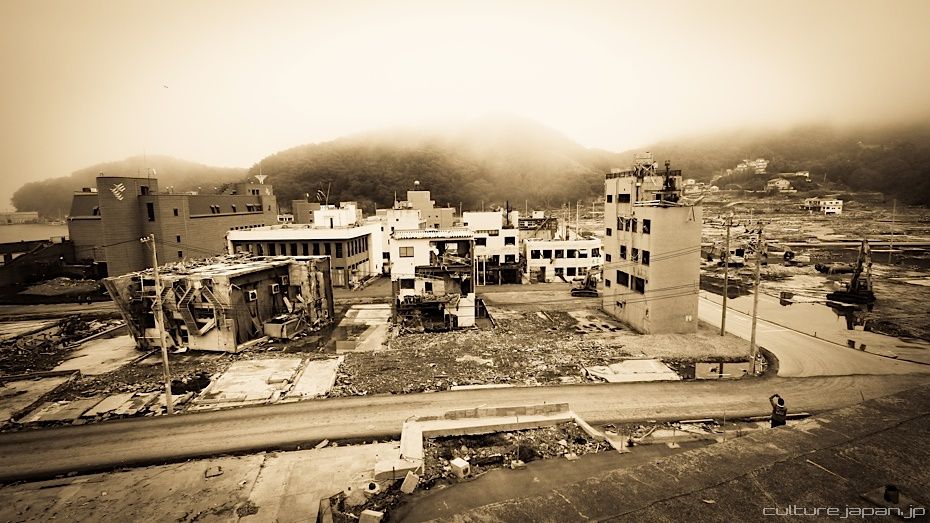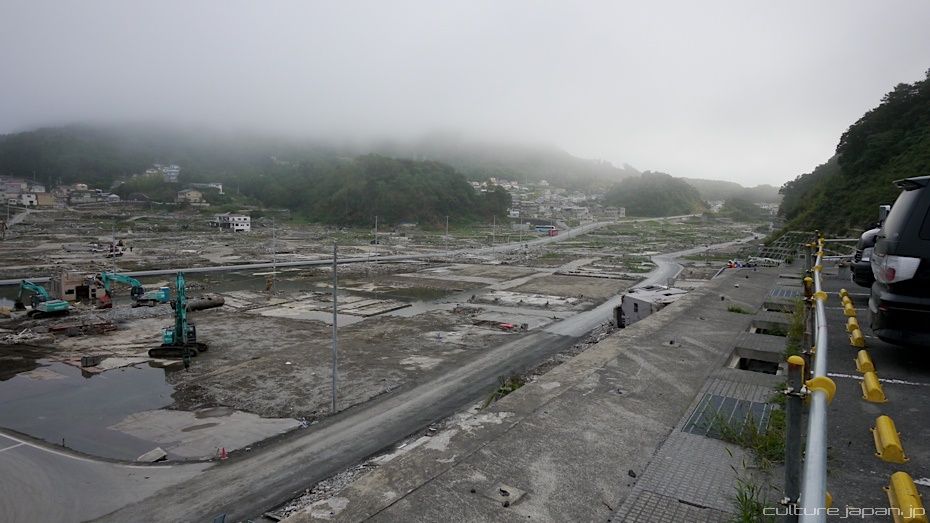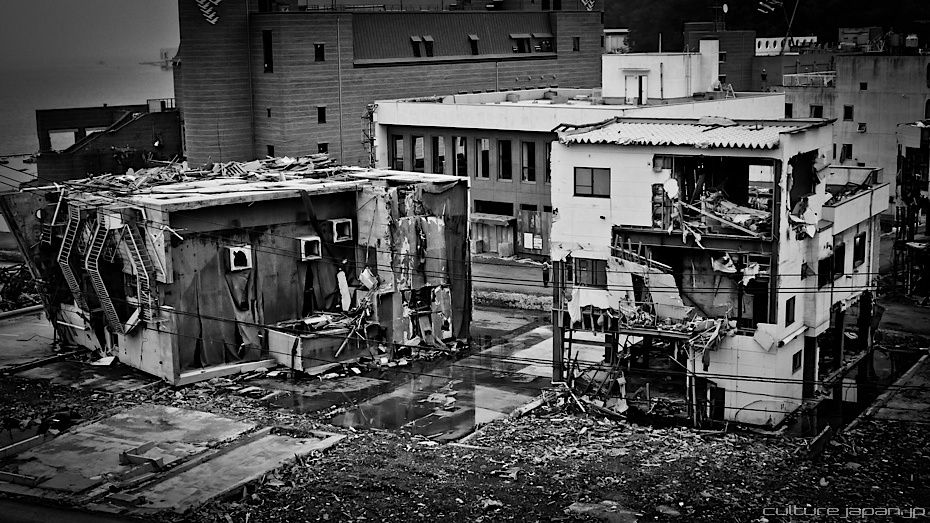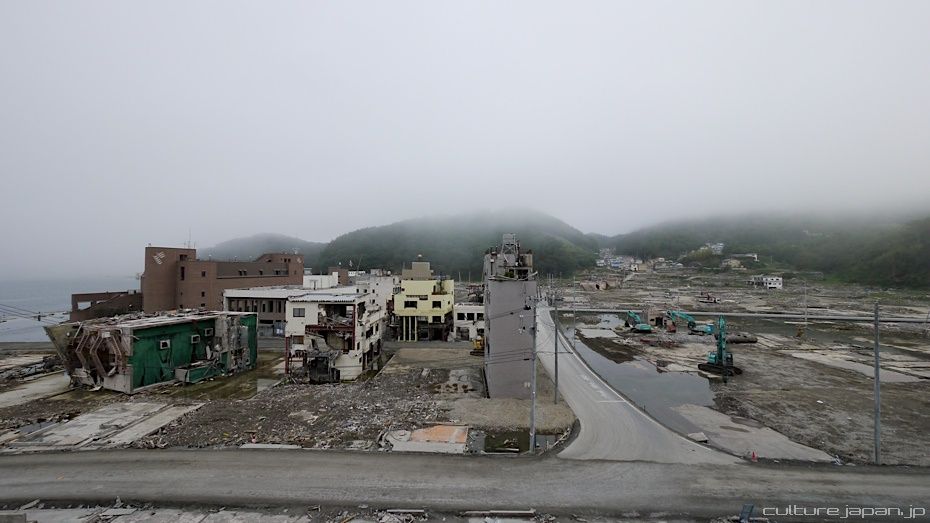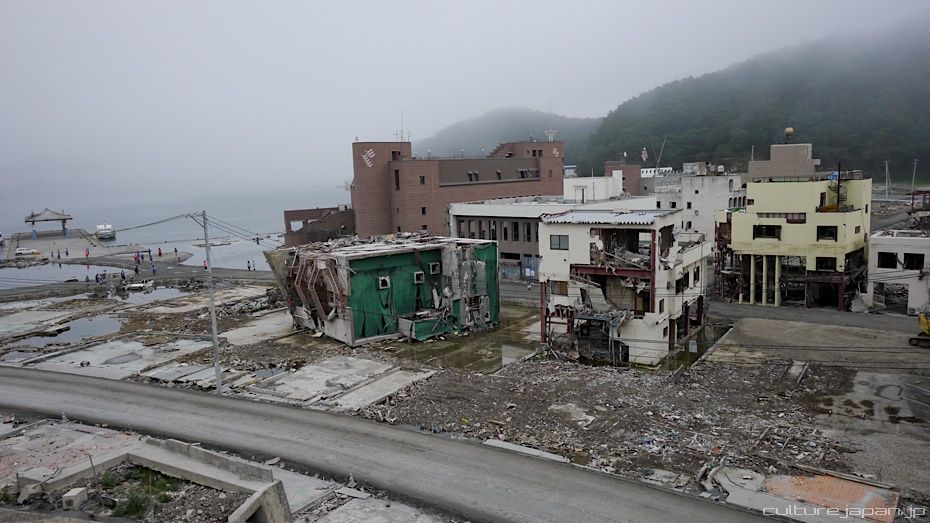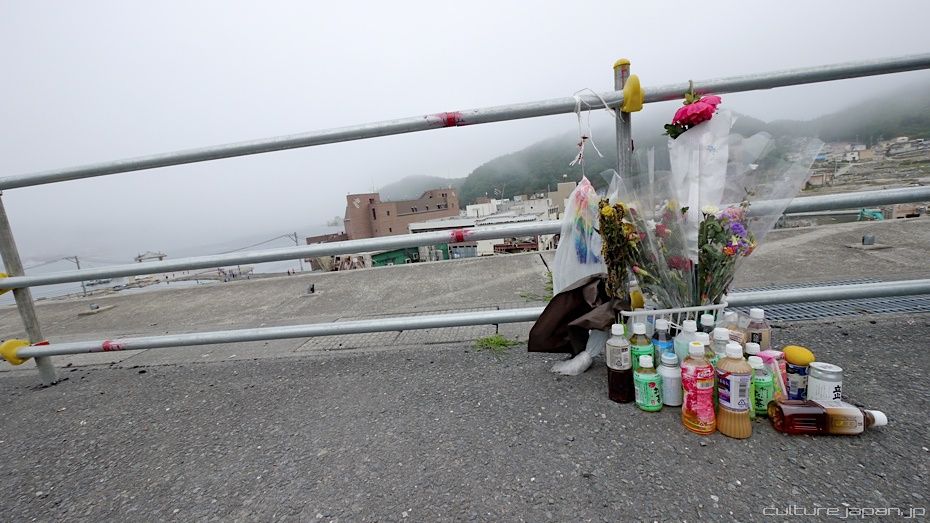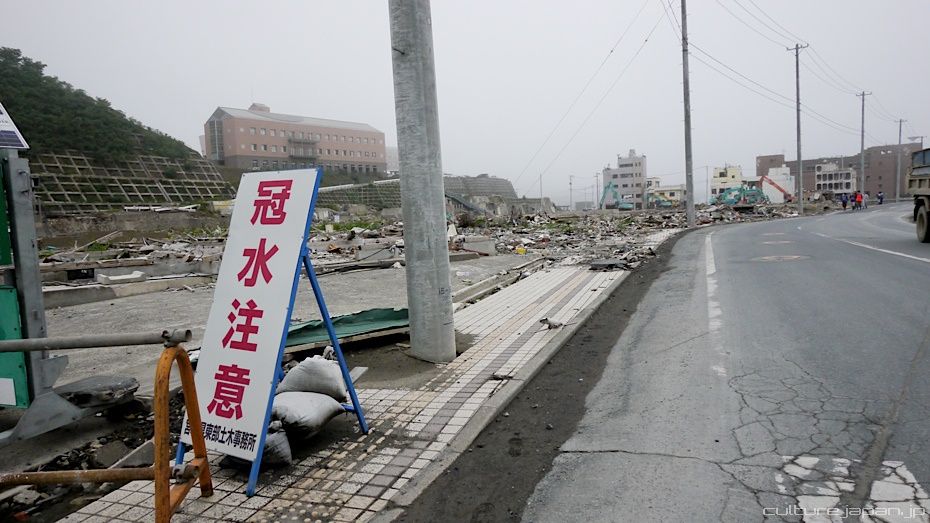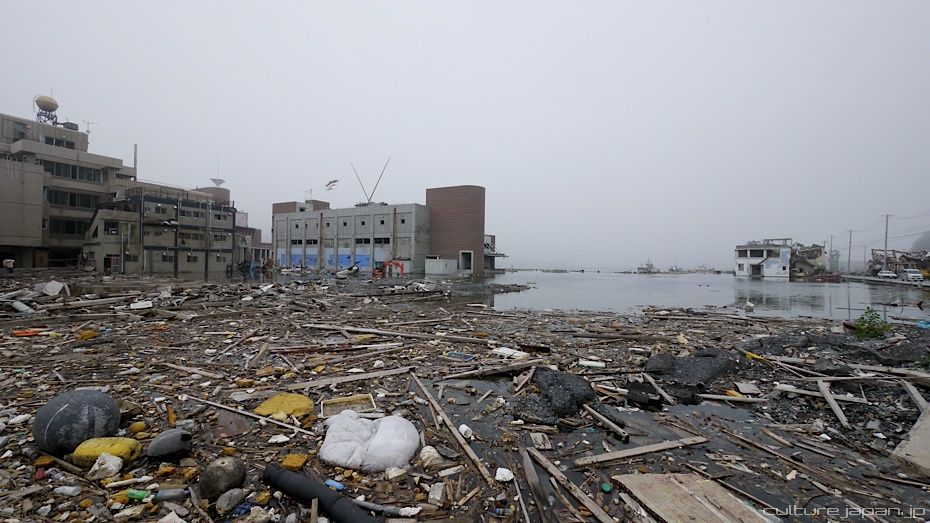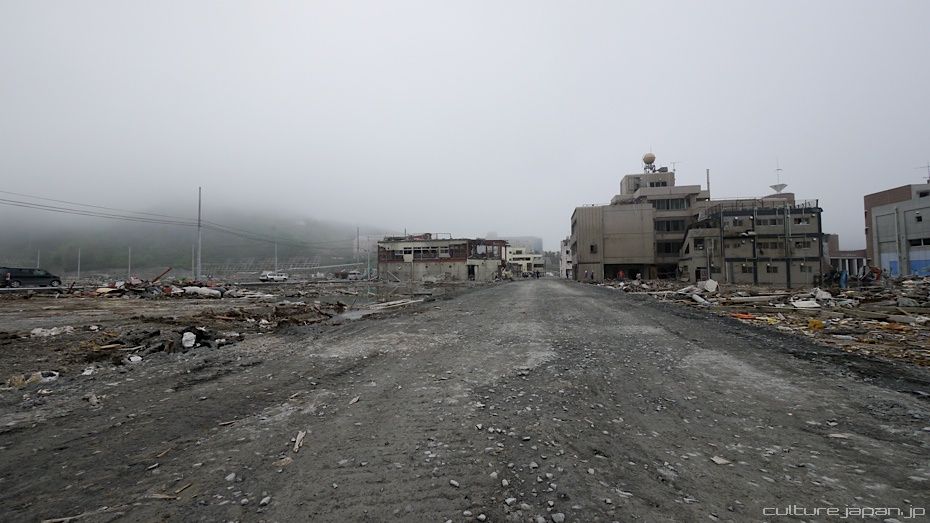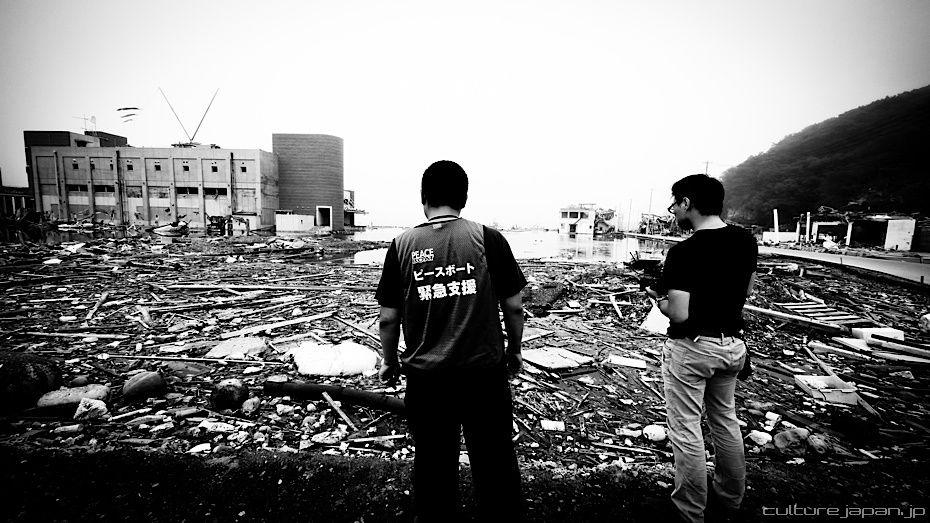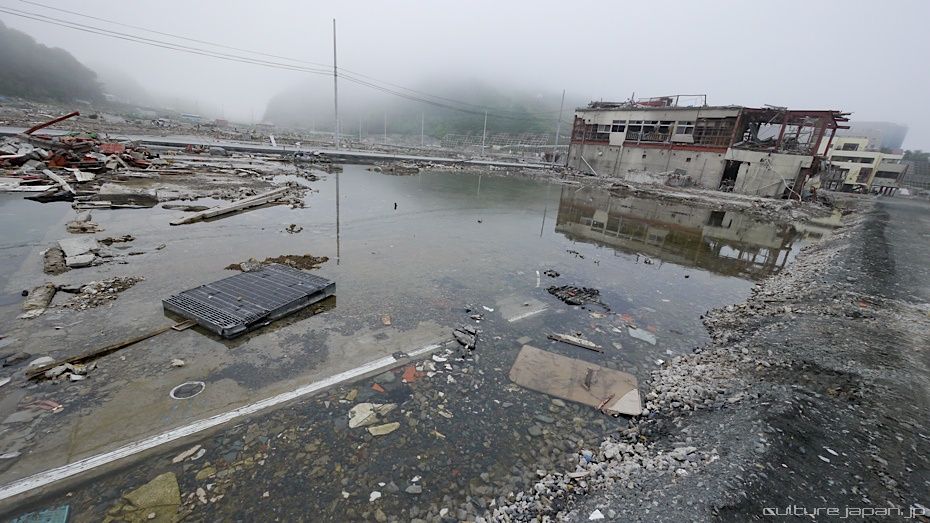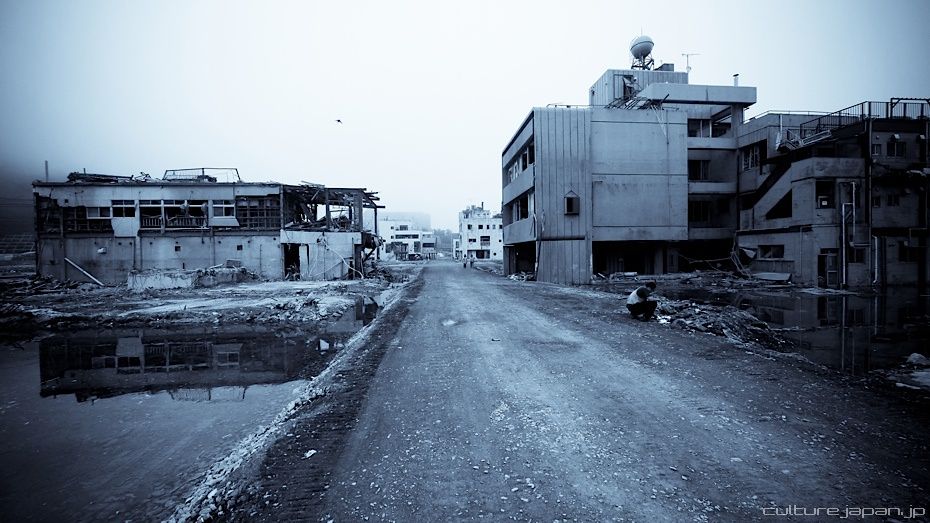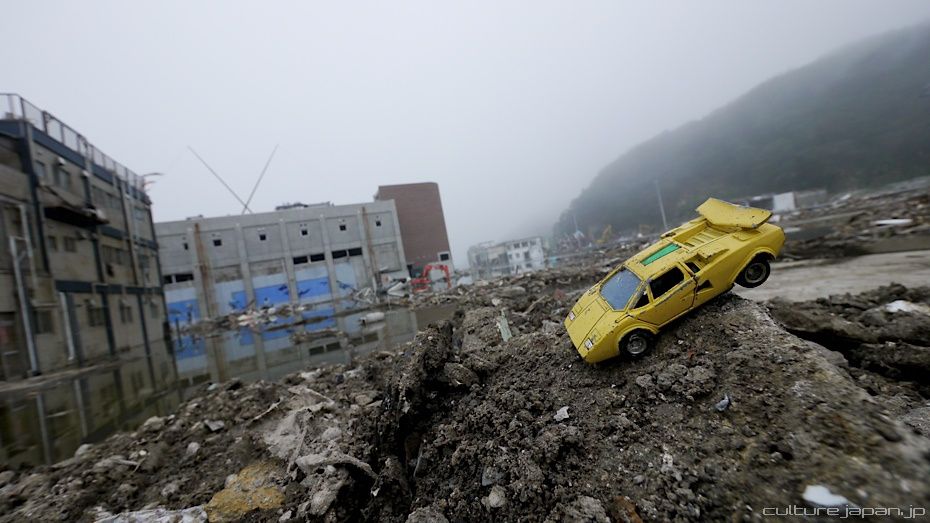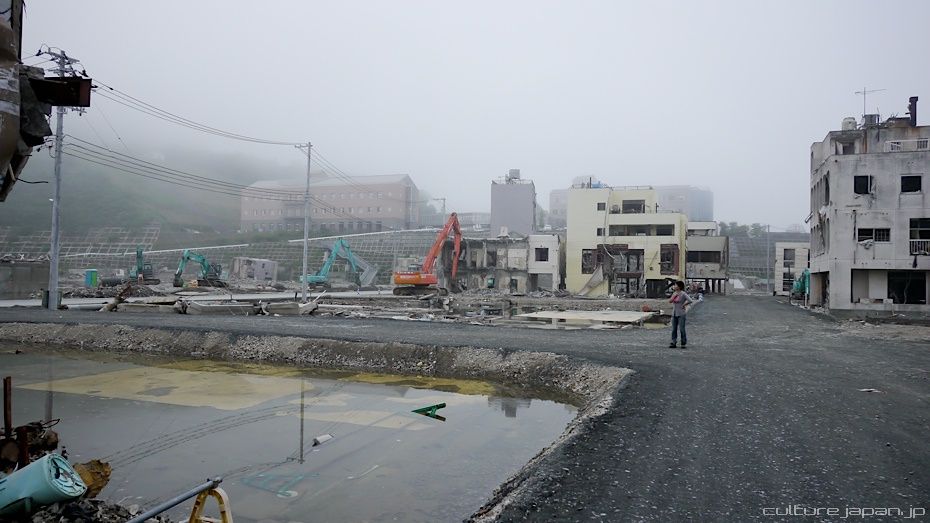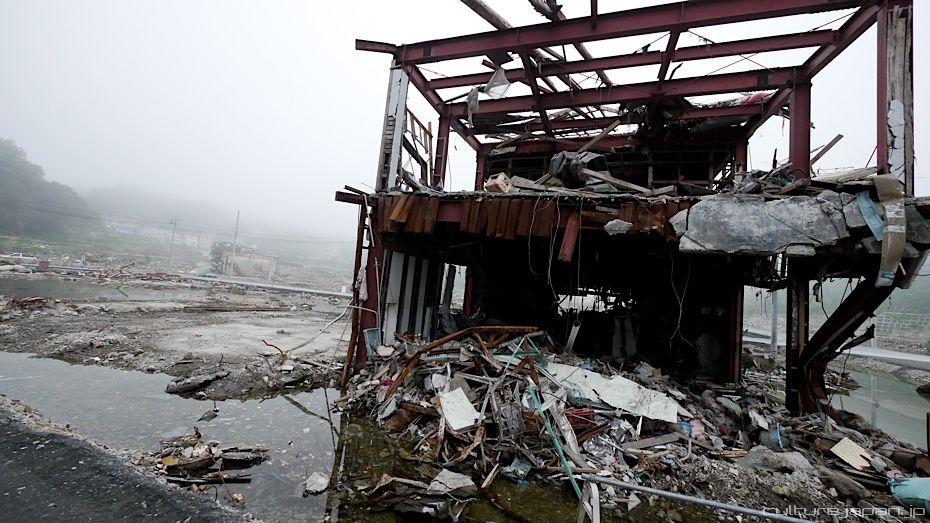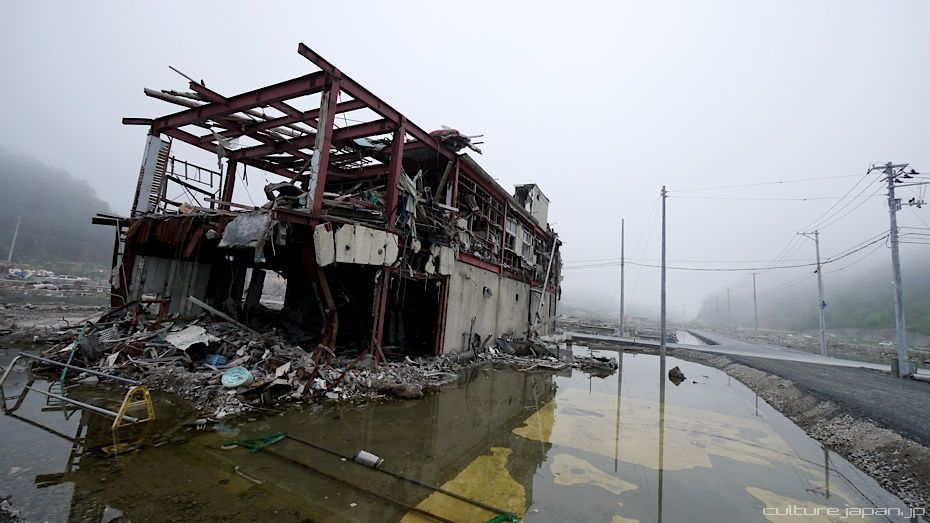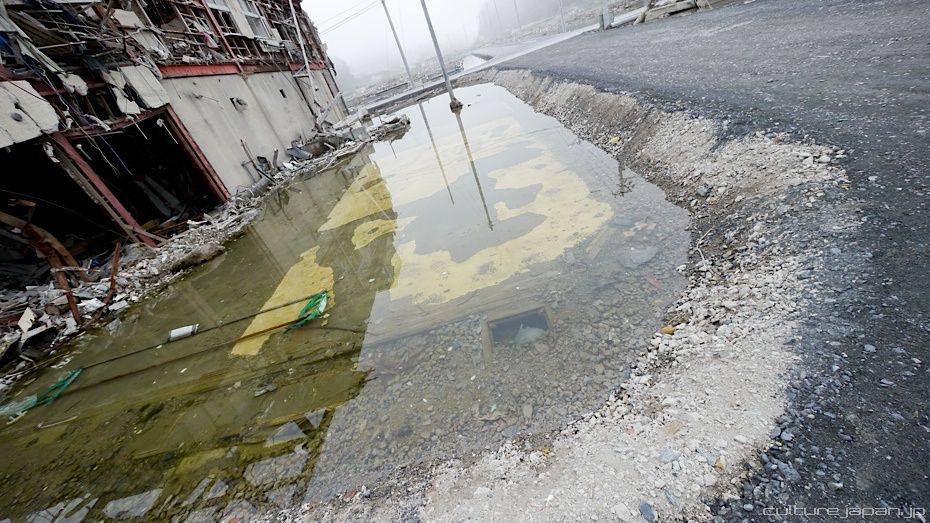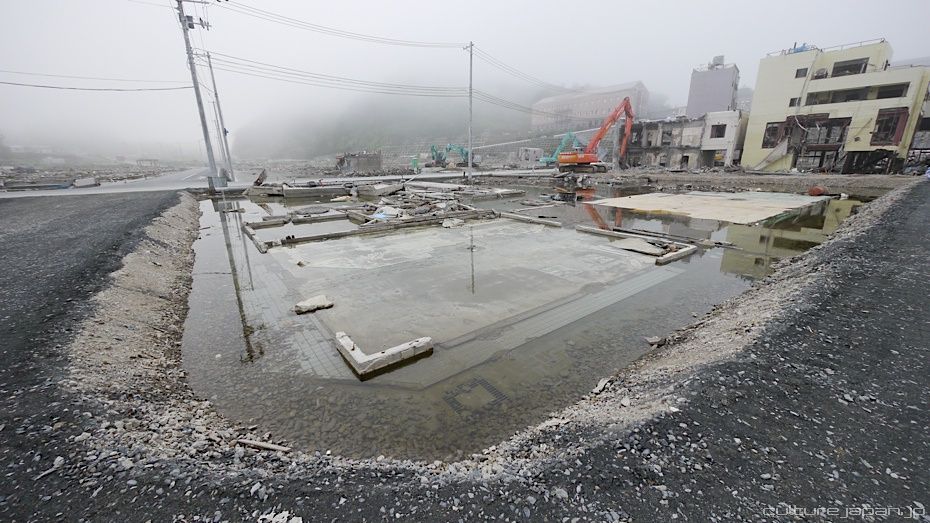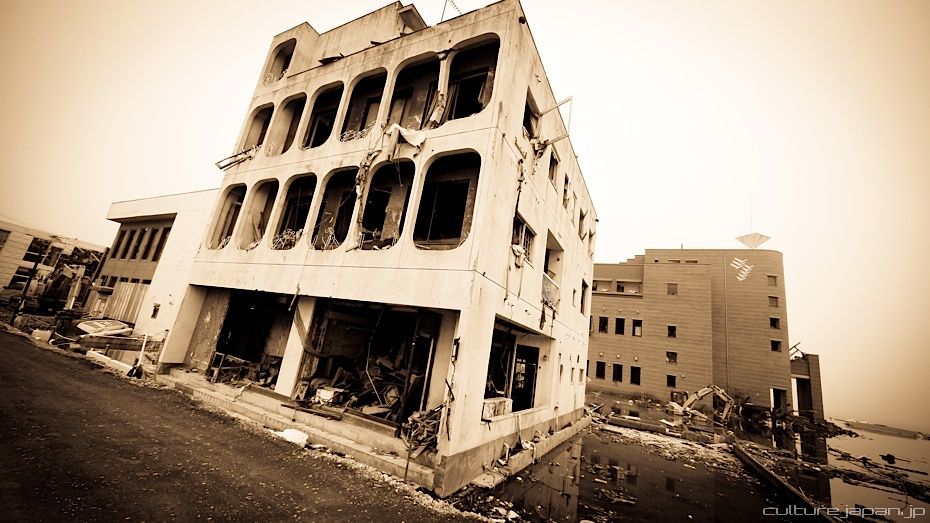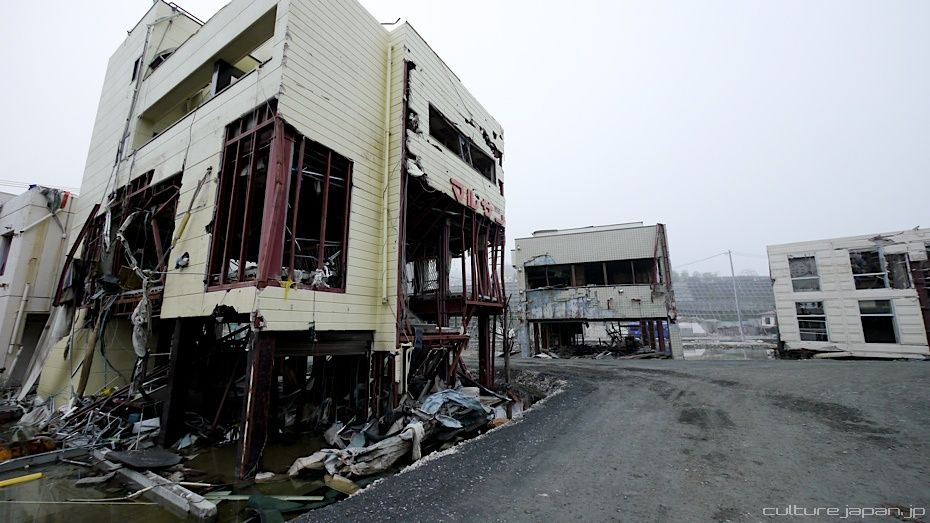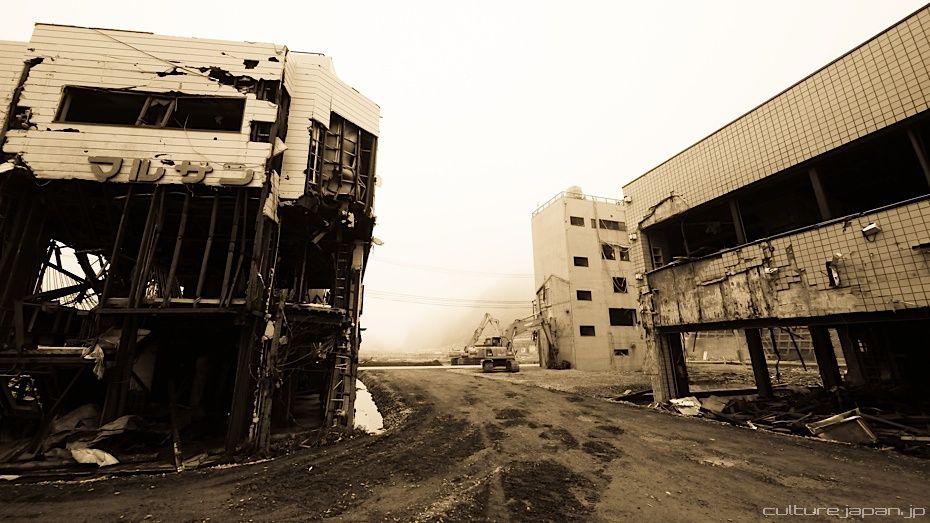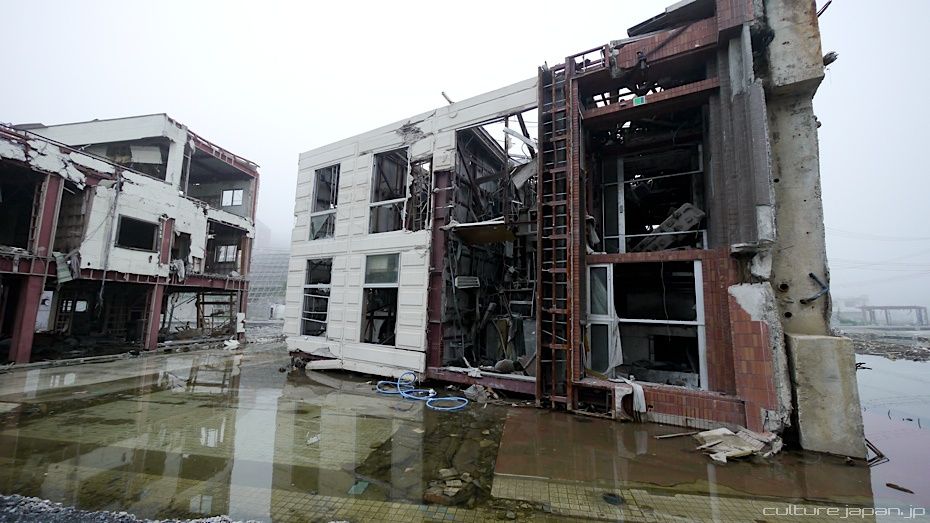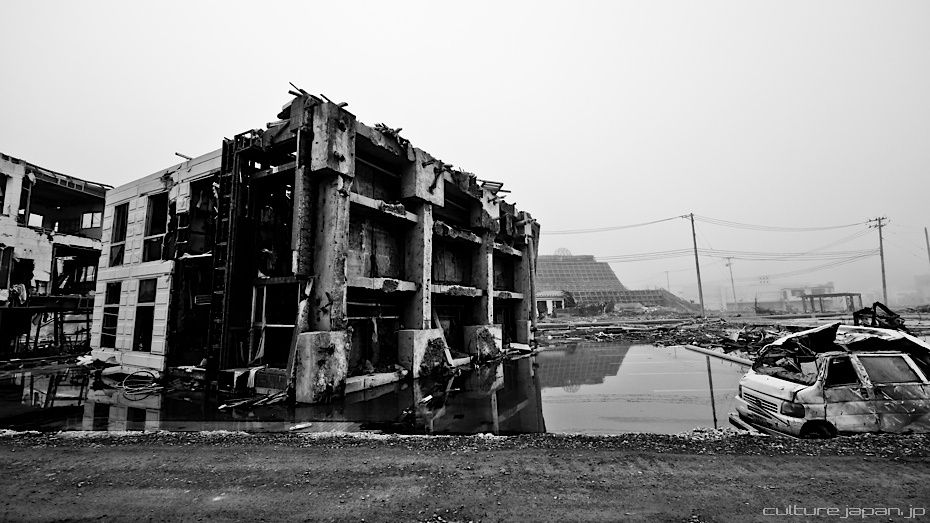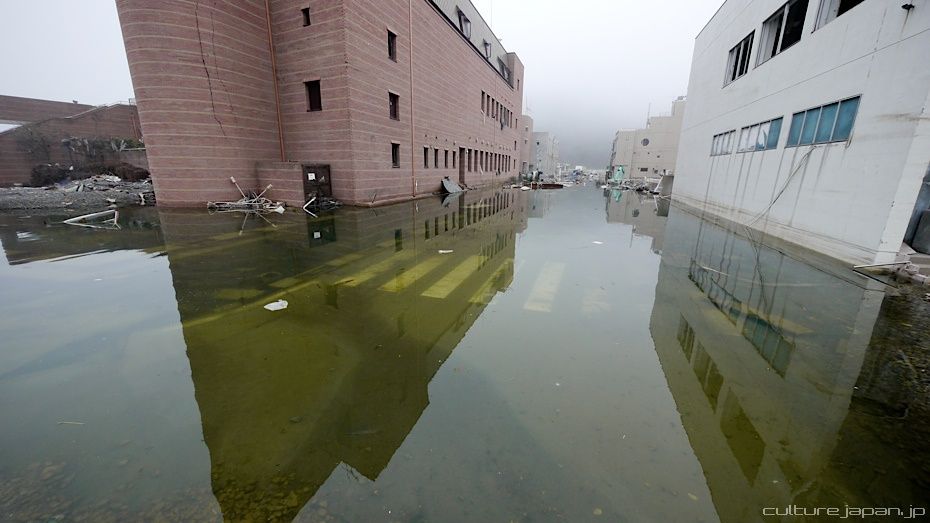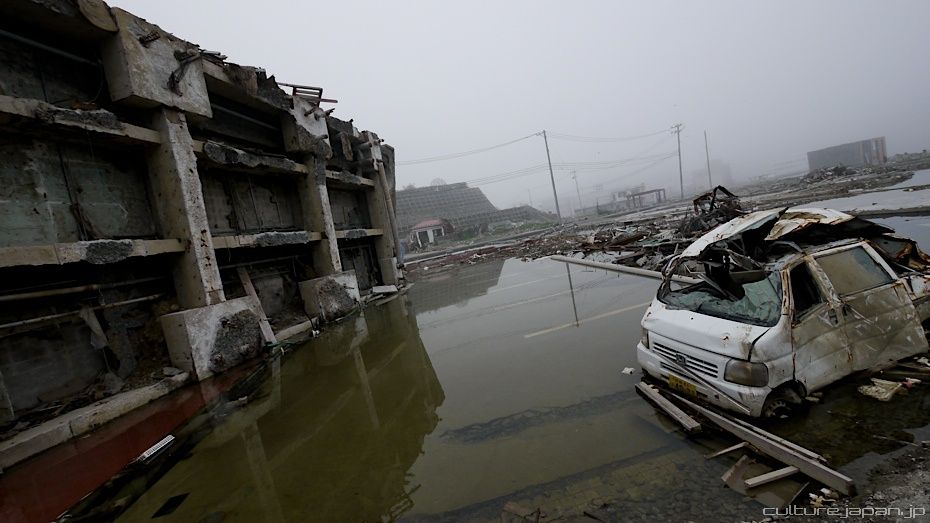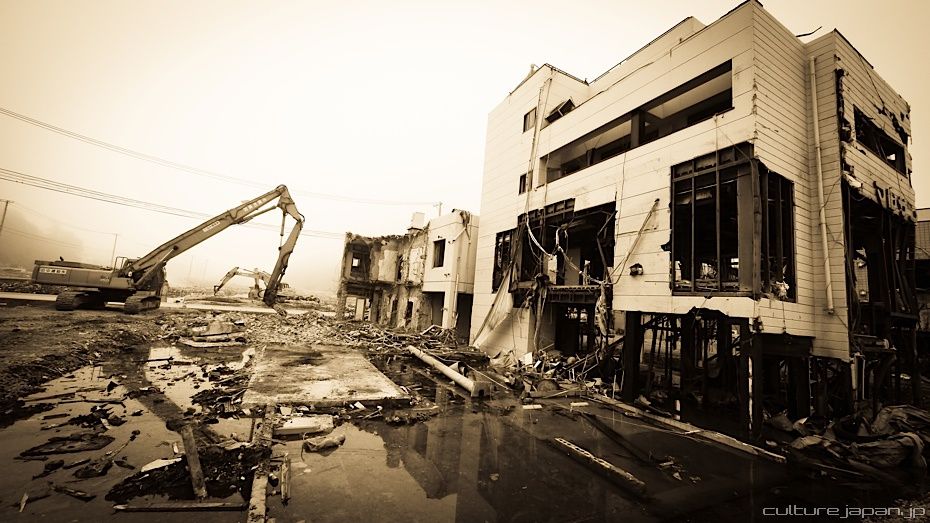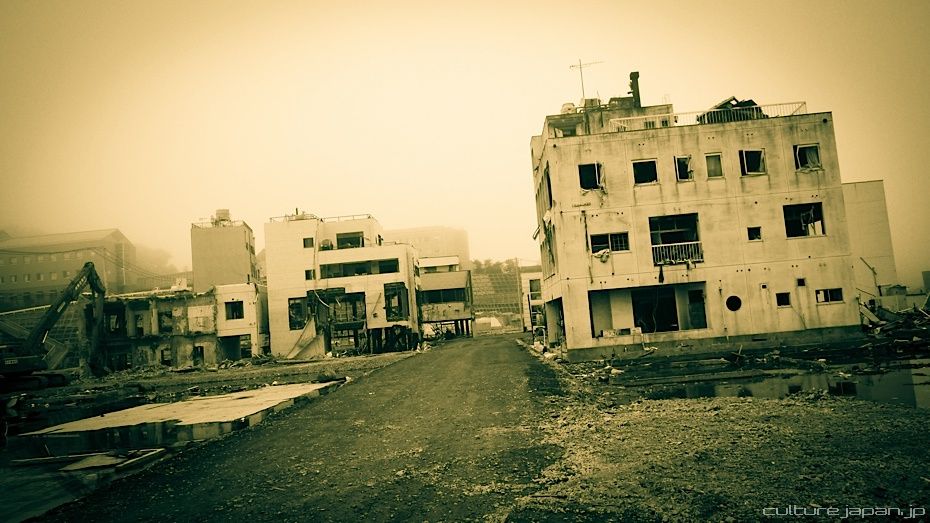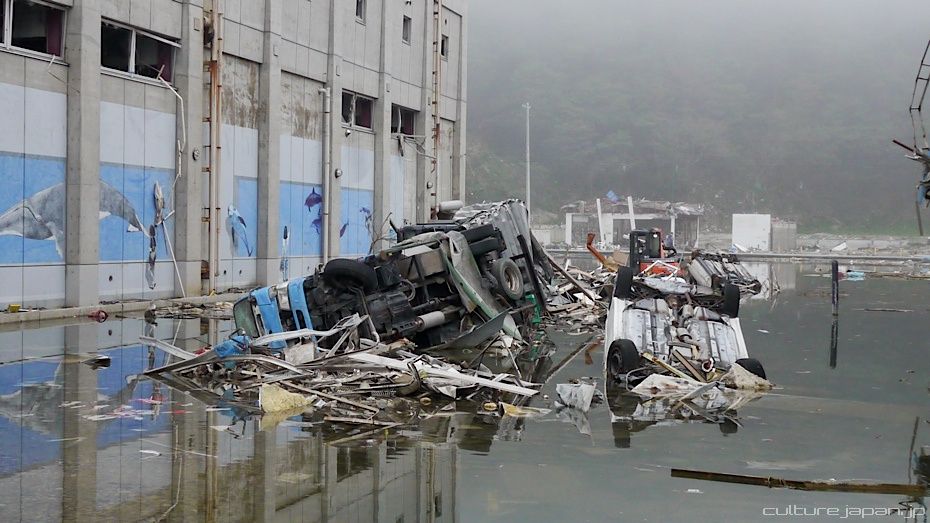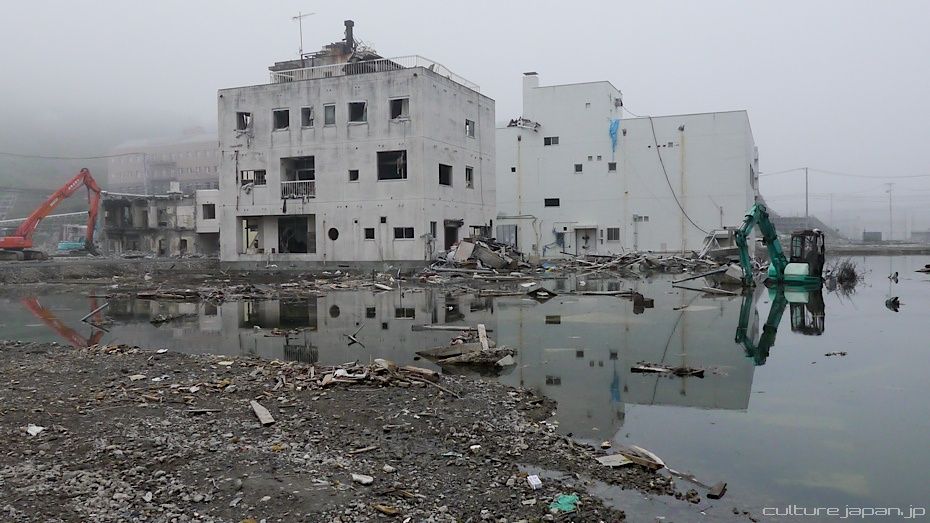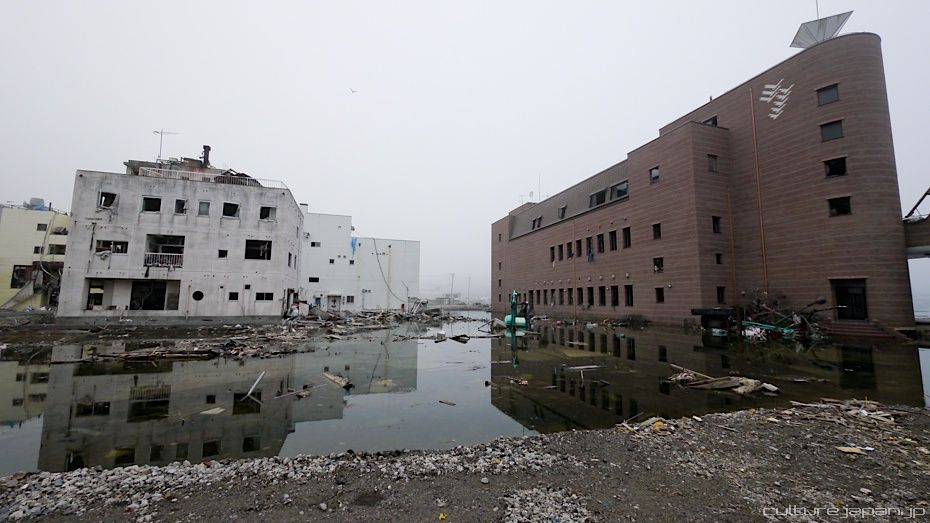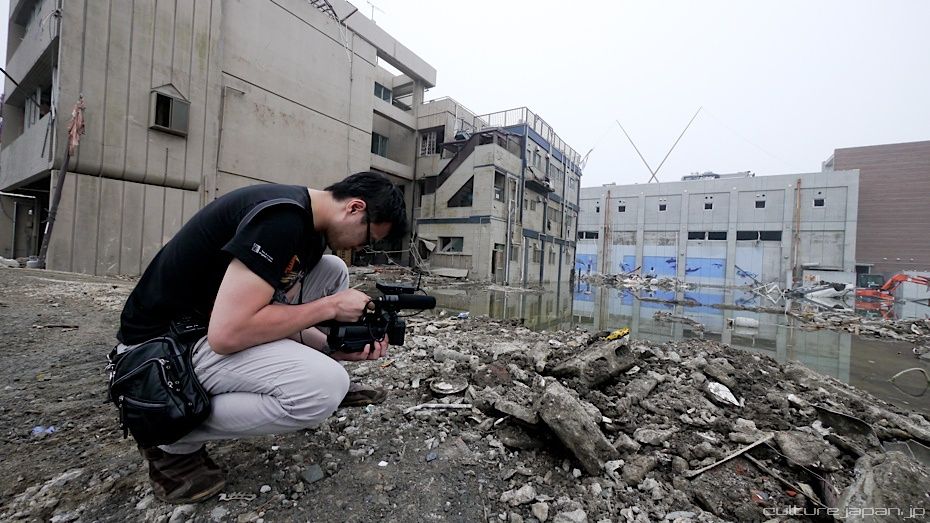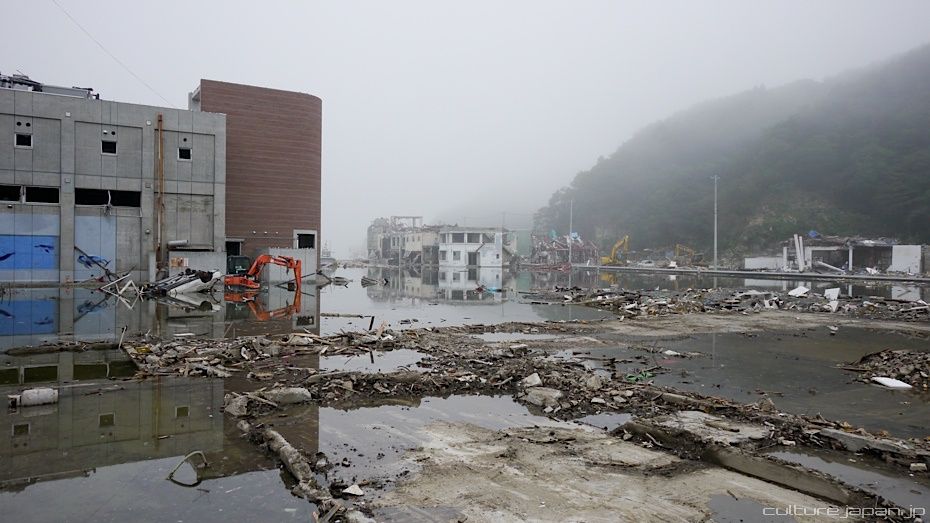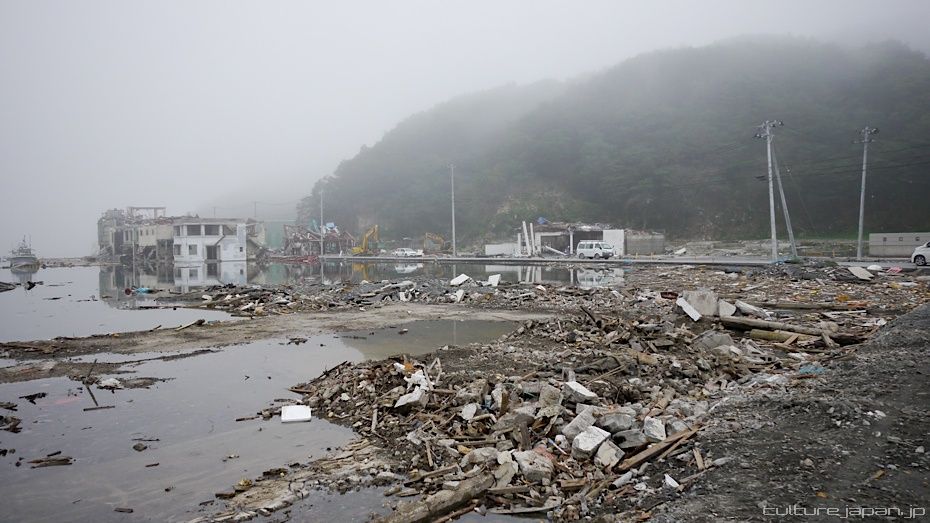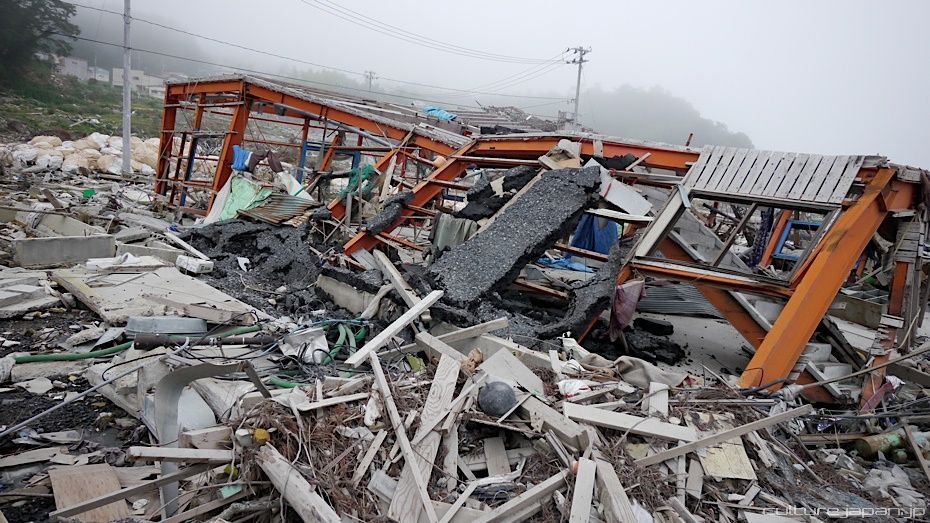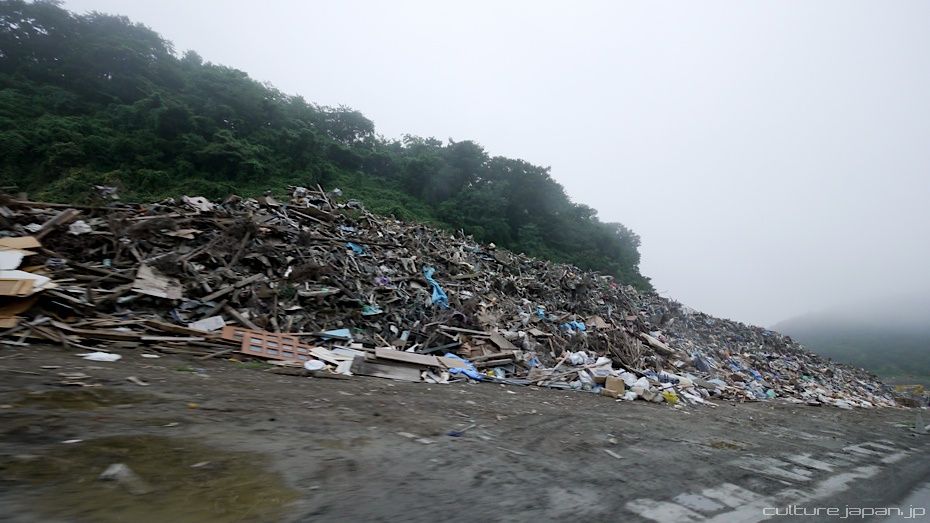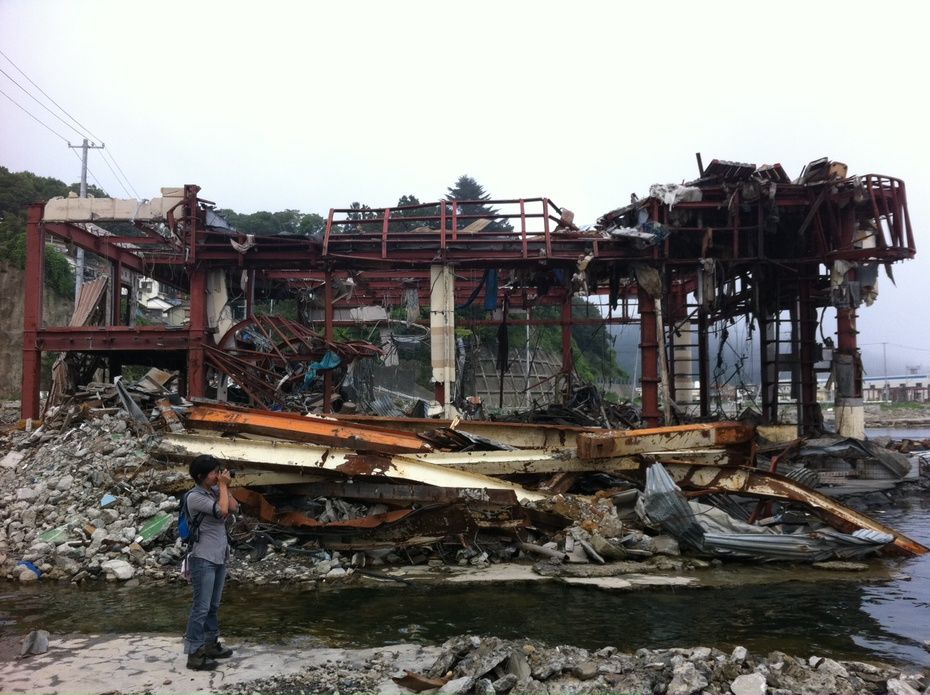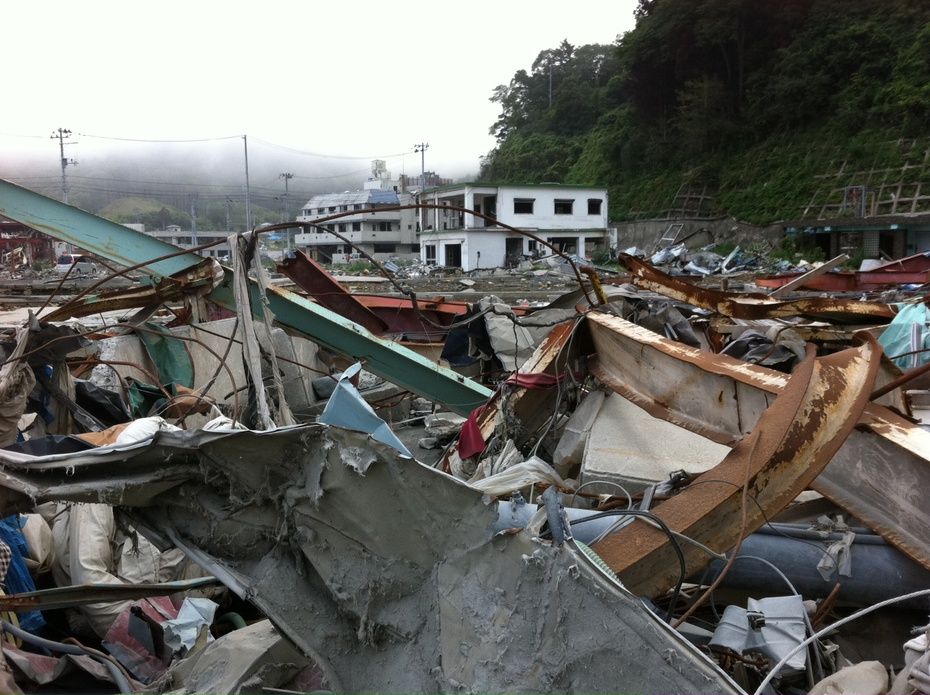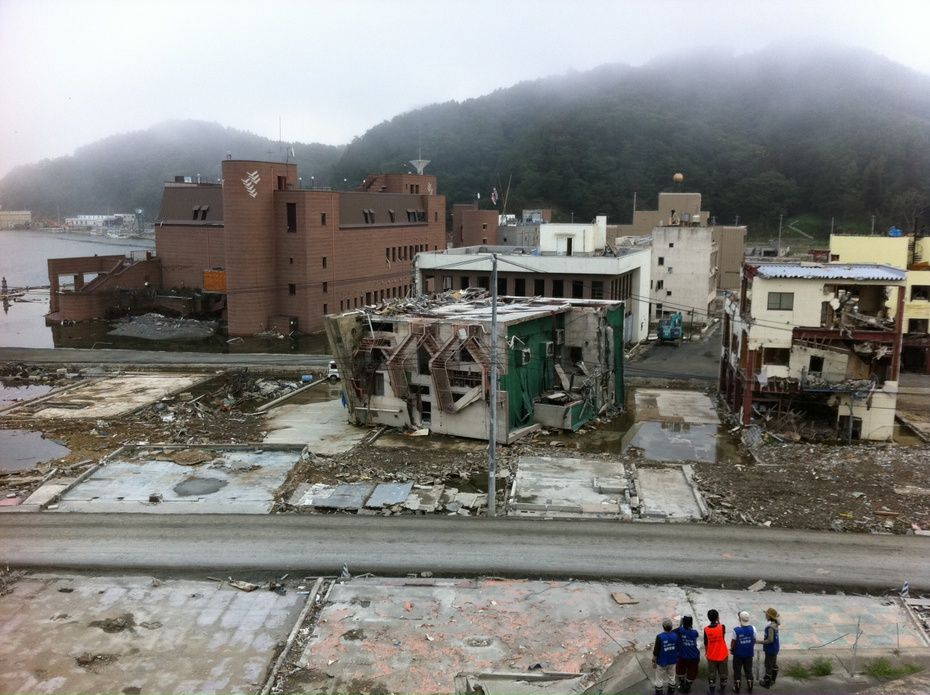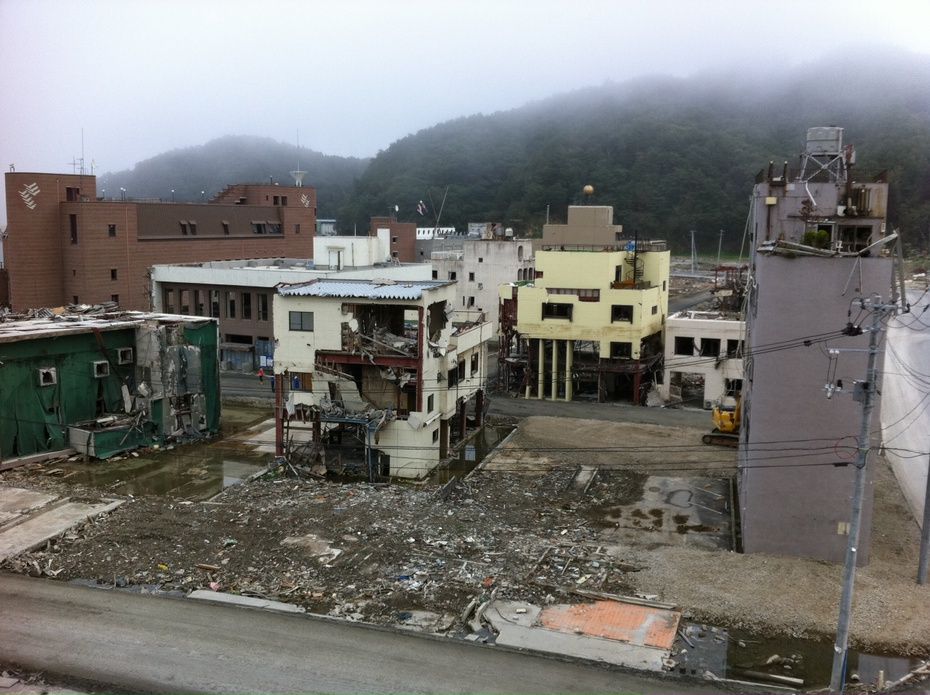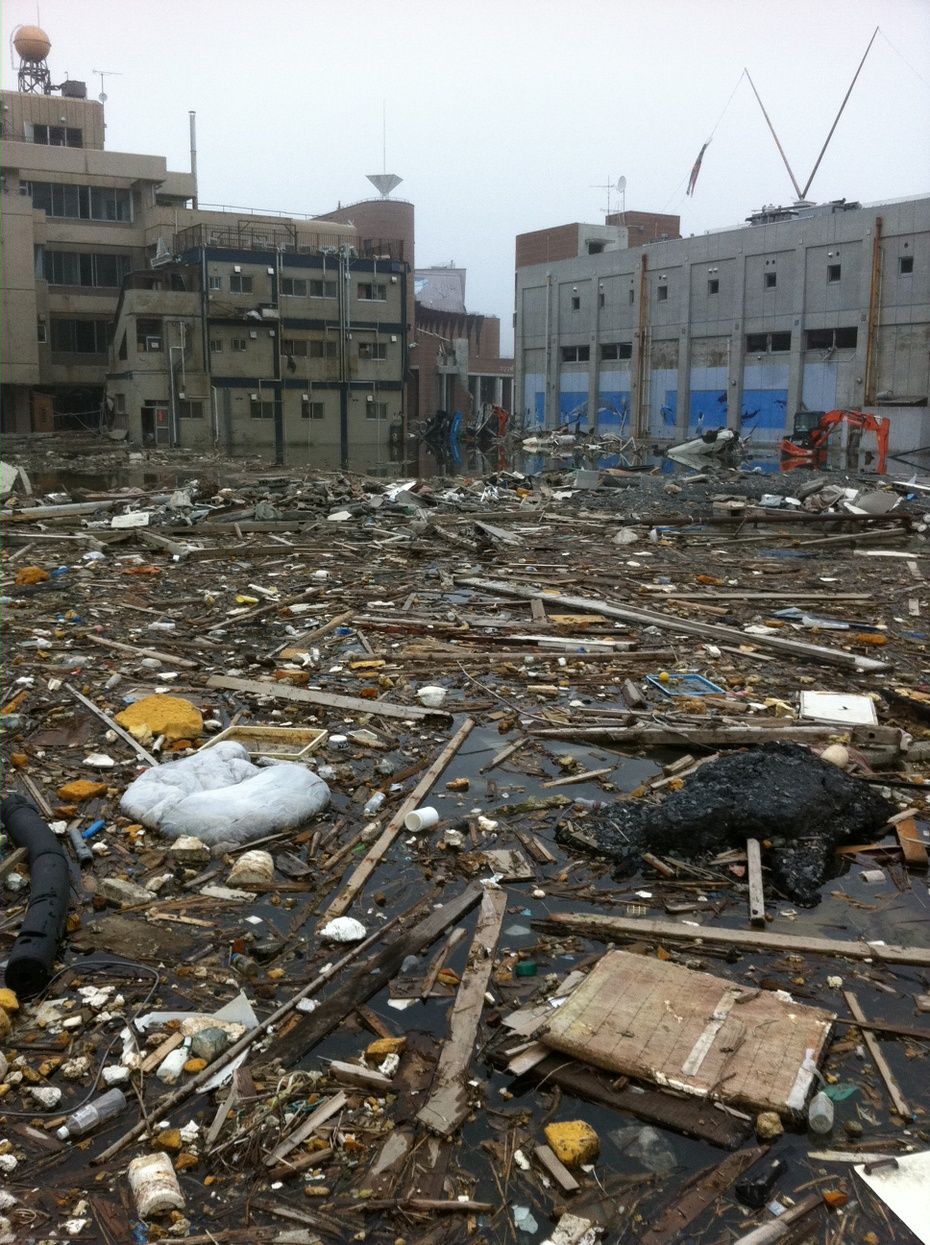Onagawa Tsunami
5 months have passed since the Tohoku Kanto earthquake. I'm currently in a small town called Onagawa which was completely destroyed by the tsunami. Before coming to Onagawa, I spent a day in Ishinomaki - everything on low ground was destroyed but many houses on high ground still stand and life is slowly getting back to normal.
Onagawa however is silent. We went in the evening where most of the workers clearing up the area had gone home for the day. There is nobody left in the town apart from a few of us from the Peace Boat volunteer team.
Google maps show satellite images after the tsunami but the street views show what this town once looked like before being destroyed. Onagawa was the worst hit town and there is hardly anything left. Shortly after the tsunami, we saw little video footage from Onagawa due to the amount of bodies in the area.
In the video below you may recognize some places in the following photos.
In the video below you may recognize some places in the following photos.
Its kinda depressing to see the street views against the current satellite images. But one thing is certain - Google Street Views have preserved what the streets once looked like and have become an invaluable part of history. Many folks moan about privacy issues about Google street views but many don't realize the importance of this service that Google provides.
And this is what the above Google Street View looks like now. Stairs still intact but everything apart from the red steel frame completely destroyed.
The small building on the left is an electronics store.
And here I am standing on what remains of the store.
Notice the building to the far right of this Google Street View.
The building is barely intact but everything around it was completely washed away.
What appears to be a bank in this Google Street View...
...and this is whats left.
A nice cozy corner of town...
...completely washed away ;-;
What once used to be a pharmacy...
...is no more.
All of this...
...reduced to rubble.
The blue sign is the entrance to the ramp leading up to the hospital on the hill.
The building on the hill is the hospital. Everything just wiped out.
Was completely lost for words. The only thing running through my head is disbelief.
This building used to be an old peoples home.
I had to look a few times at this building to realize that it was on its side. The earthquake caused liquefaction of the surrounding area which then enabled the tsunami to knock down concrete buildings - there were 3 in the area.
This area used to be filled with buildings.
These photos taken from the hospital on the hill where the tsunami managed to reach.
After the unprecedented damage, the local authorities have pretty much decided to leave the toppled buildings as they are - not only as a reminder but also to help the future generations to work towards preventing such disasters.
Some local folks however want the place cleaned up who feel that its embarrassing to leave these buildings for others to "glee" at.
How do you feel? Should the toppled buildings be demolished or left as is?
How do you feel? Should the toppled buildings be demolished or left as is?
Onagawa hospital - the tsunami even managed to get up here.
The folks you see in the photo are part of the Peace Boat volunteer team. These folks have come to volunteer for a day and before going back to Tokyo, they are brought to Onagawa to see the destruction caused by the tsunami.
Onagawa - once a beautiful town ;-;
Flowers and drink left at the ledge of the hill for those who lost their lives.
Many parts of Onagawa is submerged in water. We left our car in one area and came back to find that the road we had come through was starting to flood. I'm guessing its due to the tide as we were near the water.
This whole area submerged.
Some of the roads surface broke apart due to the magnitude 9 earthquake. Some of it got ripped off by the tsunami. And then some was bulldozed away with the rest of the debris. The area here has been cleaned up much with most of the roads accessible.
To us this may seem like rubbish but to somebody else this could be a precious memory for one who has lost everything. One of Peace Boat's task is to recover and clean photos and items which could be part of somebodies memory and hand them into a center where all lost and found belongings are kept. A note of the place and time that the item was found is also kept with the belongings.
Many areas beside the roads are submerged in water.
Japanese folks can be overly polite - an apology is stuck to the front of the bank apologizing for the disruption of service asking folks to go to other branches at Ishinomaki.
For the first few weeks after the tsunami, the affected areas had a foul stench of rotten fish. I was in one of the areas in Ishonomaki which still had a stench which lead to my headache after - never smelt anything like it.
5 months have passed since the Tohoku Kanto earthquake. I'm currently in a small town called Onagawa which was completely destroyed by the tsunami. Before coming to Onagawa, I spent a day in Ishinomaki - everything on low ground was destroyed but many houses on high ground still stand and life is slowly getting back to normal.
Onagawa however is silent. We went in the evening where most of the workers clearing up the area had gone home for the day. There is nobody left in the town apart from a few of us from the Peace Boat volunteer team.
Google maps show satellite images after the tsunami but the street views show what this town once looked like before being destroyed. Onagawa was the worst hit town and there is hardly anything left. Shortly after the tsunami, we saw little video footage from Onagawa due to the amount of bodies in the area.
In the video below you may recognize some places in the following photos.
In the video below you may recognize some places in the following photos.
Its kinda depressing to see the street views against the current satellite images. But one thing is certain - Google Street Views have preserved what the streets once looked like and have become an invaluable part of history. Many folks moan about privacy issues about Google street views but many don't realize the importance of this service that Google provides.
And this is what the above Google Street View looks like now. Stairs still intact but everything apart from the red steel frame completely destroyed.
The small building on the left is an electronics store.
And here I am standing on what remains of the store.
Notice the building to the far right of this Google Street View.
The building is barely intact but everything around it was completely washed away.
What appears to be a bank in this Google Street View...
...and this is whats left.
A nice cozy corner of town...
...completely washed away ;-;
What once used to be a pharmacy...
...is no more.
All of this...
...reduced to rubble.
The blue sign is the entrance to the ramp leading up to the hospital on the hill.
The building on the hill is the hospital. Everything just wiped out.
Was completely lost for words. The only thing running through my head is disbelief.
This building used to be an old peoples home.
I had to look a few times at this building to realize that it was on its side. The earthquake caused liquefaction of the surrounding area which then enabled the tsunami to knock down concrete buildings - there were 3 in the area.
This area used to be filled with buildings.
These photos taken from the hospital on the hill where the tsunami managed to reach.
After the unprecedented damage, the local authorities have pretty much decided to leave the toppled buildings as they are - not only as a reminder but also to help the future generations to work towards preventing such disasters.
Some local folks however want the place cleaned up who feel that its embarrassing to leave these buildings for others to "glee" at.
How do you feel? Should the toppled buildings be demolished or left as is?
How do you feel? Should the toppled buildings be demolished or left as is?
Onagawa hospital - the tsunami even managed to get up here.
The folks you see in the photo are part of the Peace Boat volunteer team. These folks have come to volunteer for a day and before going back to Tokyo, they are brought to Onagawa to see the destruction caused by the tsunami.
Onagawa - once a beautiful town ;-;
Flowers and drink left at the ledge of the hill for those who lost their lives.
Many parts of Onagawa is submerged in water. We left our car in one area and came back to find that the road we had come through was starting to flood. I'm guessing its due to the tide as we were near the water.
This whole area submerged.
Some of the roads surface broke apart due to the magnitude 9 earthquake. Some of it got ripped off by the tsunami. And then some was bulldozed away with the rest of the debris. The area here has been cleaned up much with most of the roads accessible.
To us this may seem like rubbish but to somebody else this could be a precious memory for one who has lost everything. One of Peace Boat's task is to recover and clean photos and items which could be part of somebodies memory and hand them into a center where all lost and found belongings are kept. A note of the place and time that the item was found is also kept with the belongings.
Many areas beside the roads are submerged in water.
Japanese folks can be overly polite - an apology is stuck to the front of the bank apologizing for the disruption of service asking folks to go to other branches at Ishinomaki.
For the first few weeks after the tsunami, the affected areas had a foul stench of rotten fish. I was in one of the areas in Ishonomaki which still had a stench which lead to my headache after - never smelt anything like it.
Spent the day with Hiyarama-san who took me around to see all the various volunteer activities that Peace Boat were doing in the area. According to the locals, money from the Red Cross society is not getting through. One of the reasons is that folks want the money to be distributed evenly but nobody wants to take responsibility of deciding what "evenly" is.
As a result, many folks are still suffering. Without the help of the volunteer groups in the area (not just Peace Boat), I honestly don't know how the local folks would survive without help from the outside. In the next post I will cover the situation in Ishinomaki and then talk about the volunteer activities of Peace Boat and give you details of how you can help.
One huge area was used as a dumping ground for the debris.
This is the sort of thing that should be only seen in the movies.
All Tohoku Kanto earthquake related photo posts listed up below.

